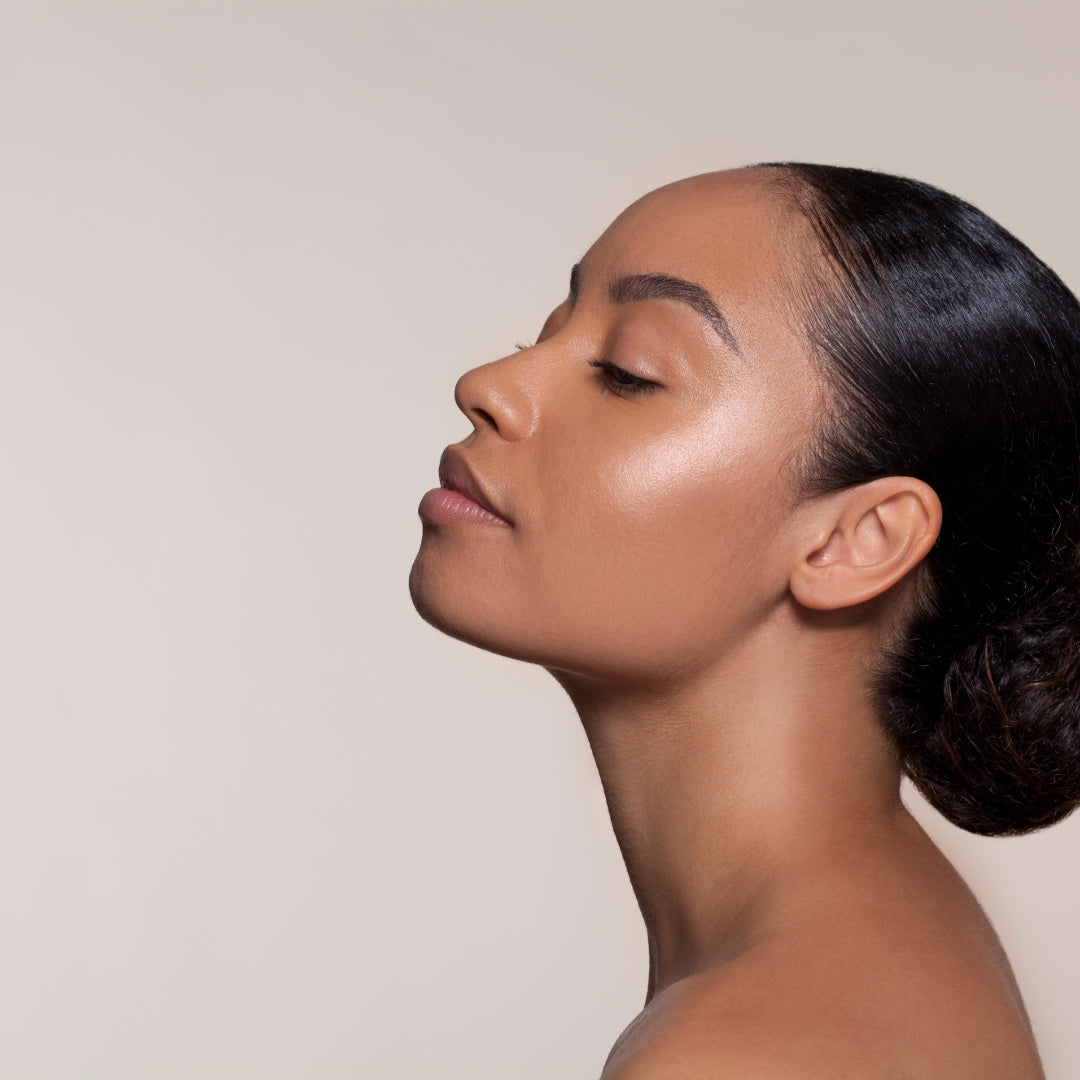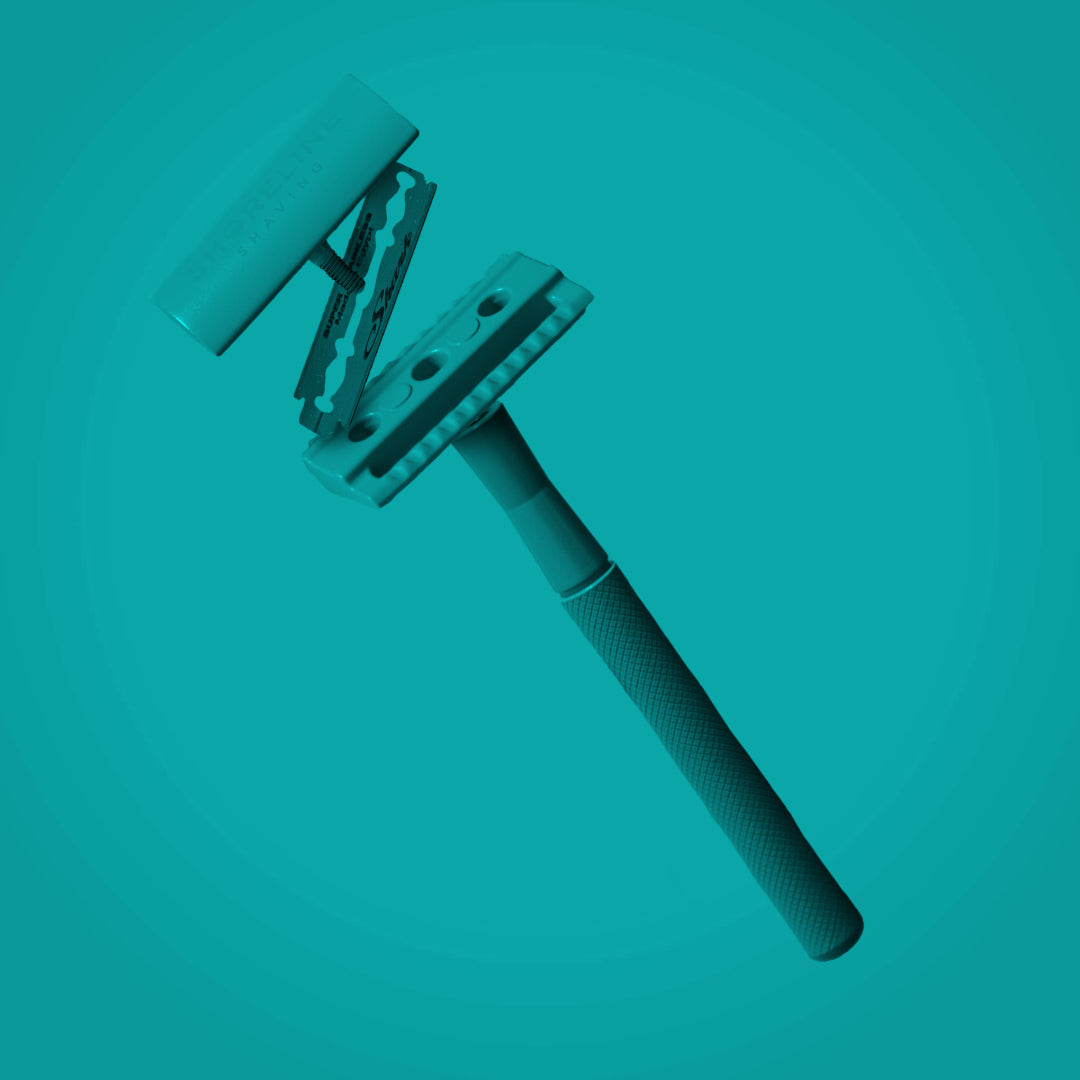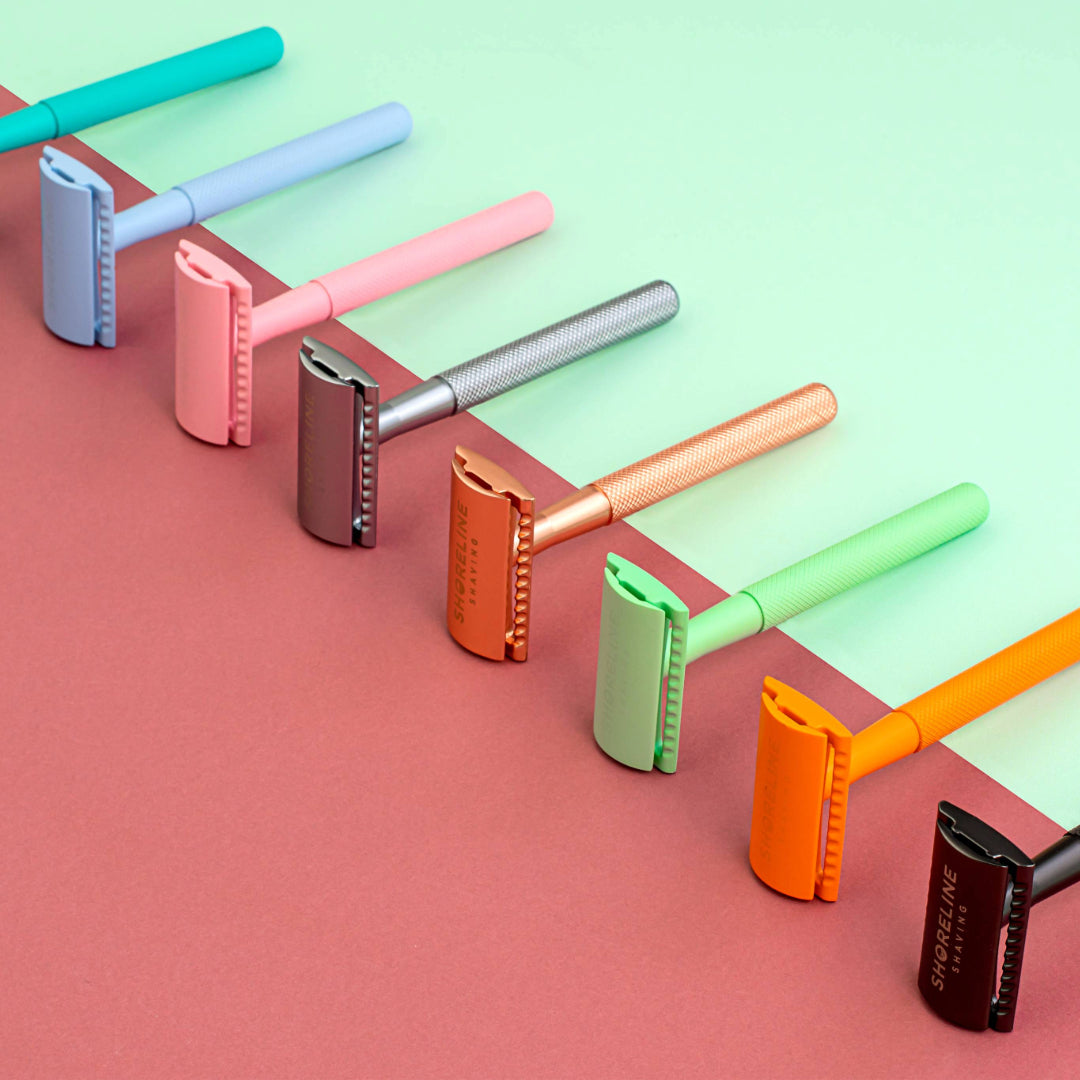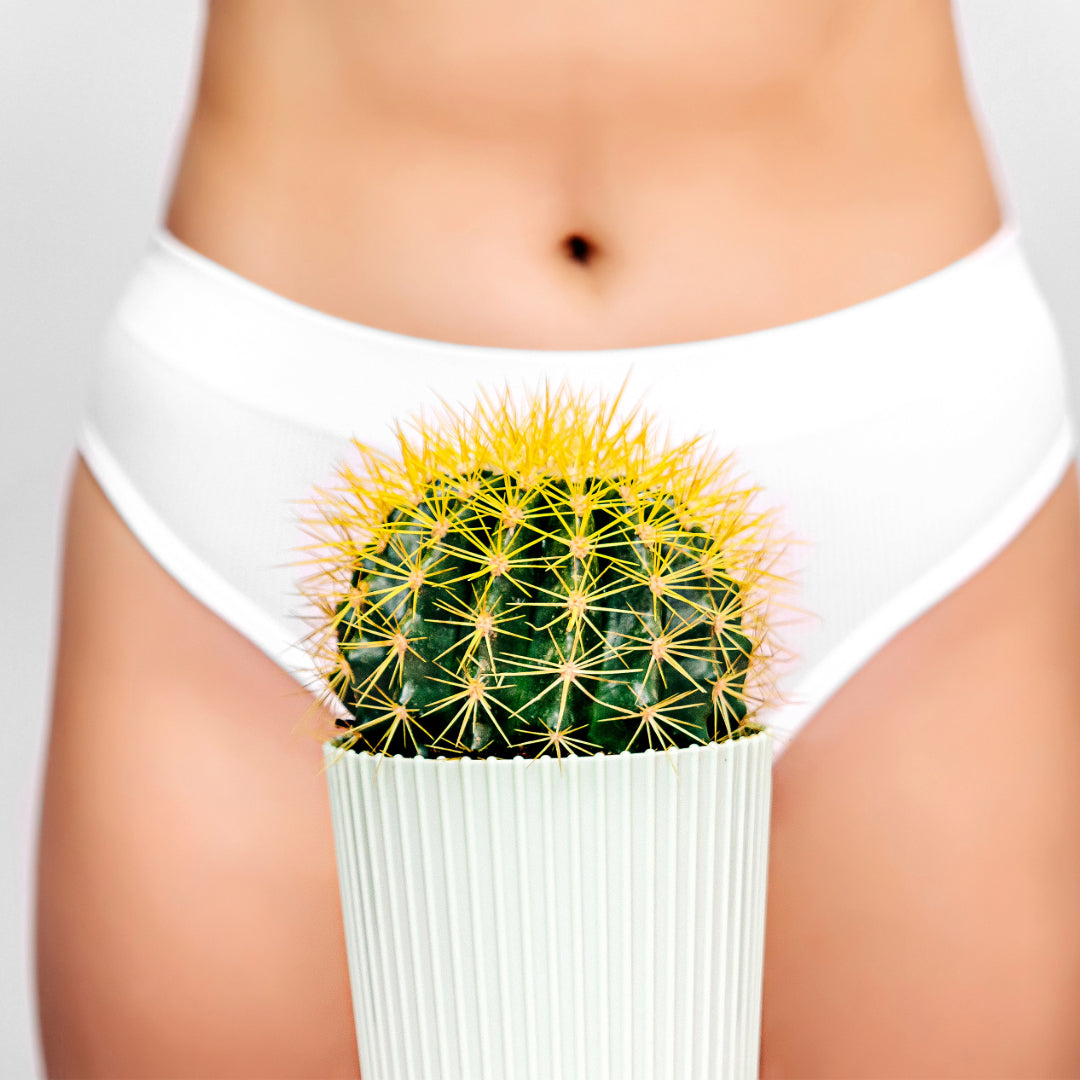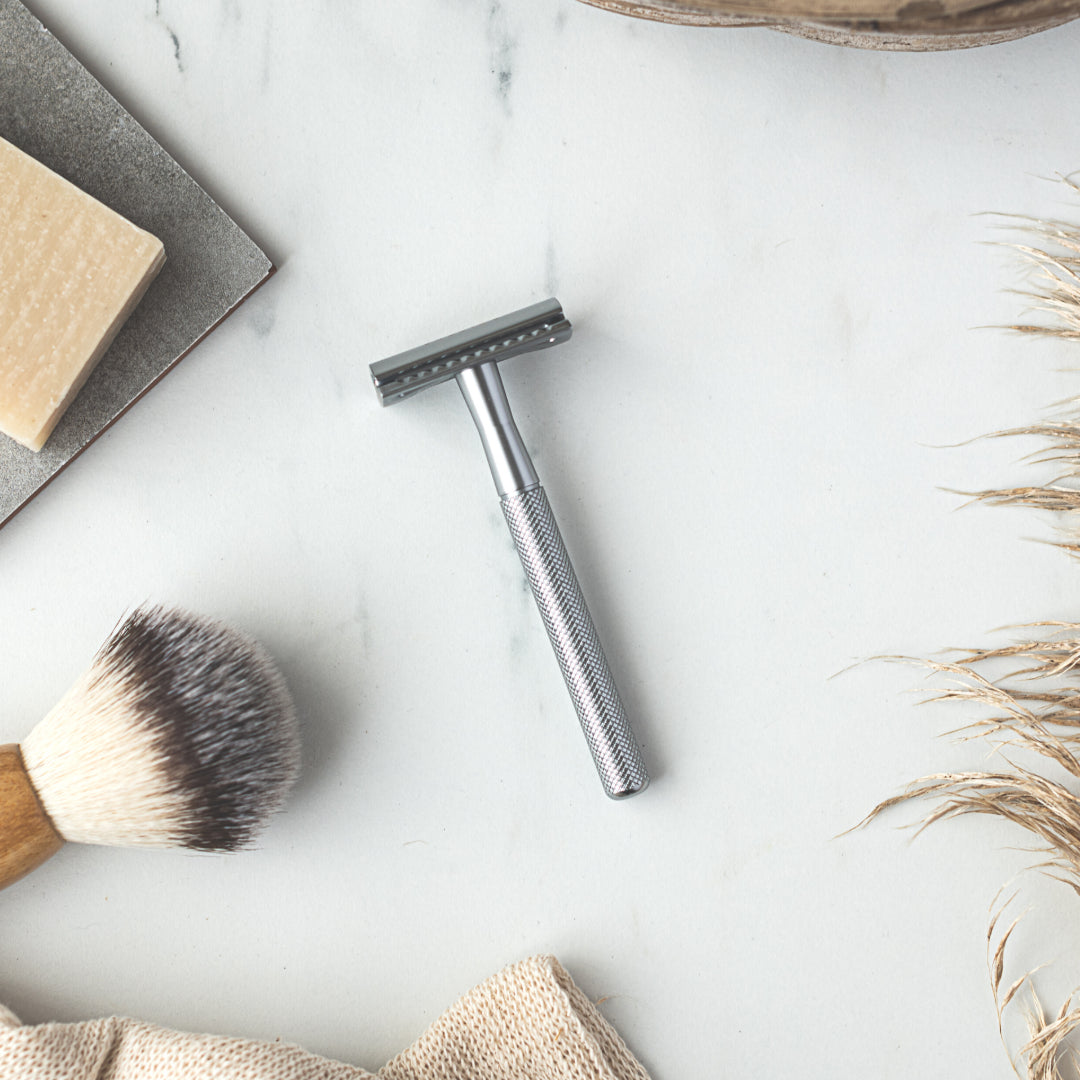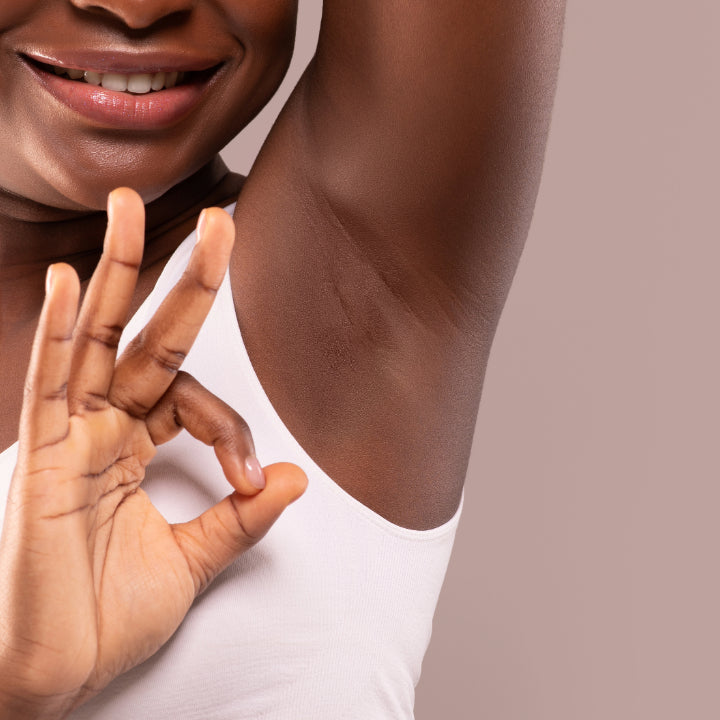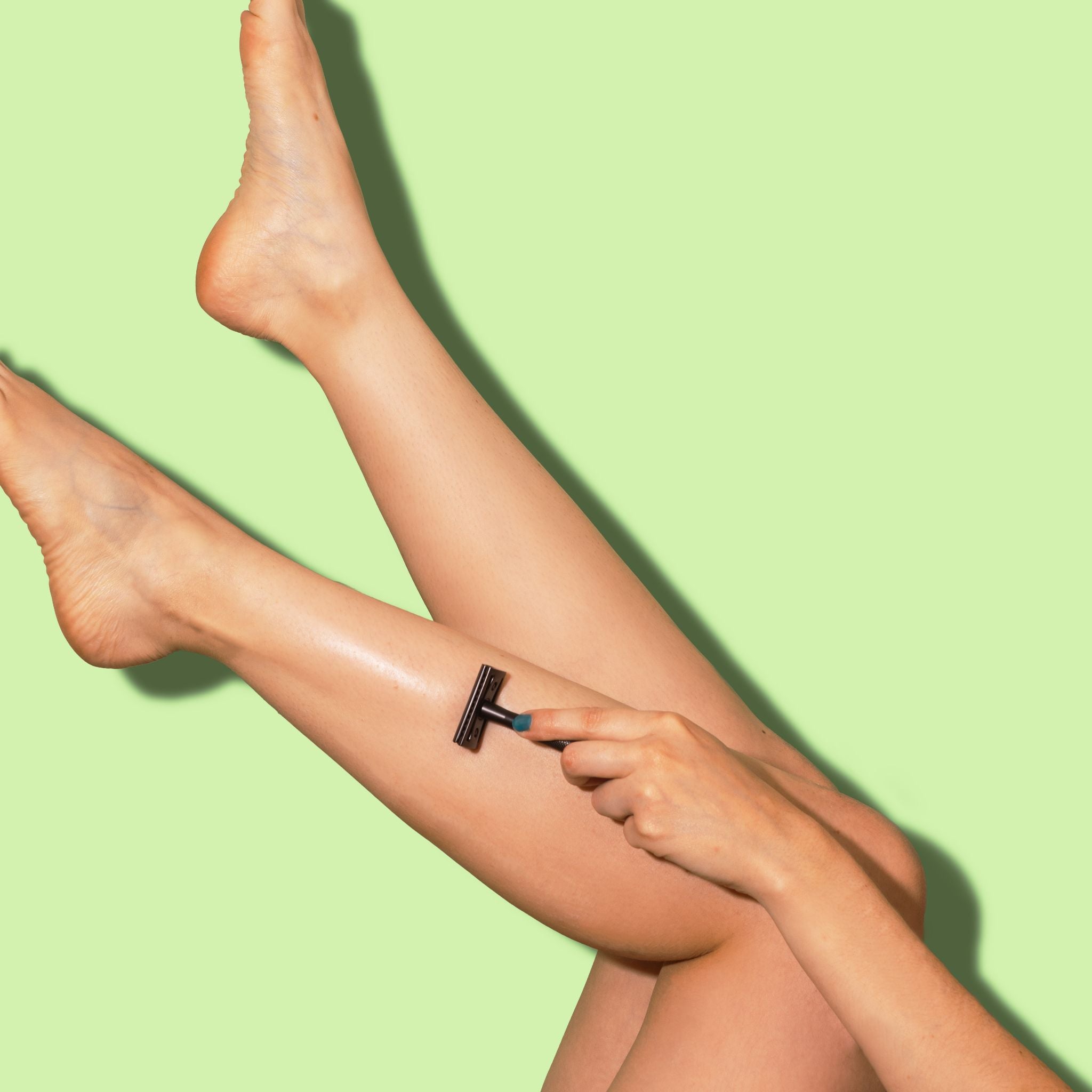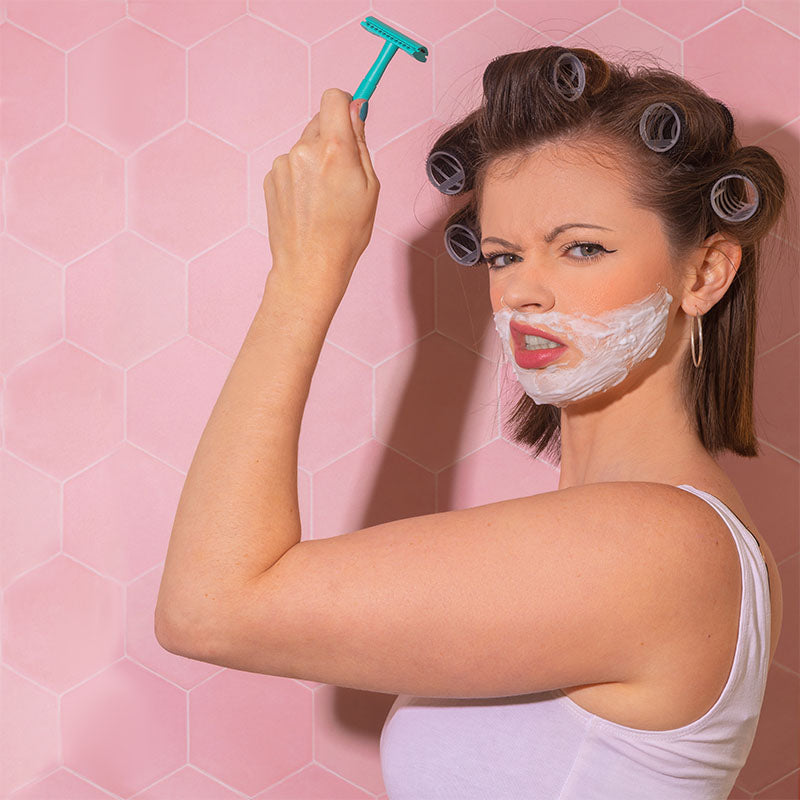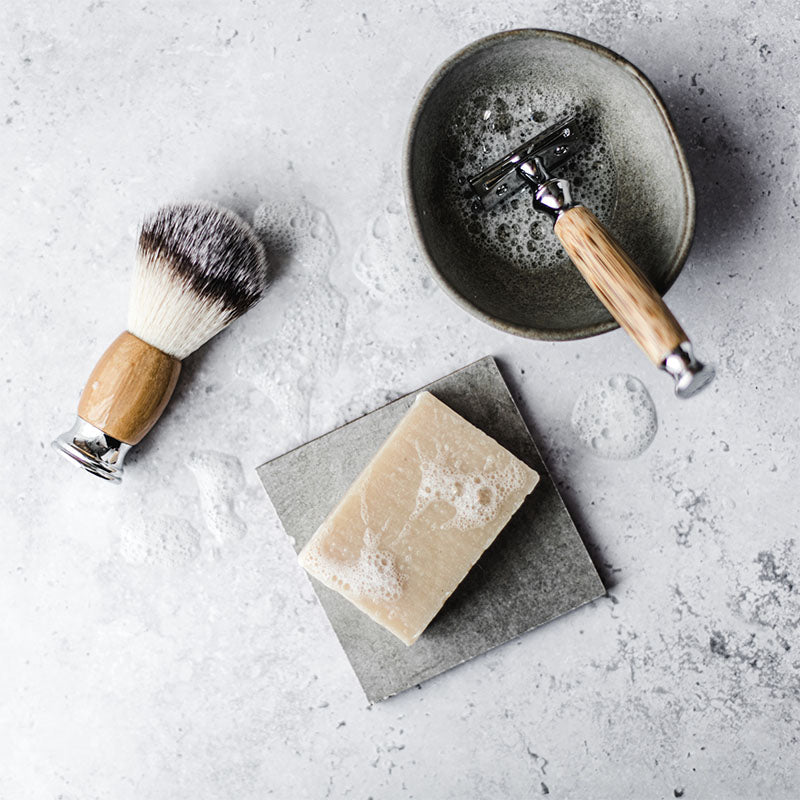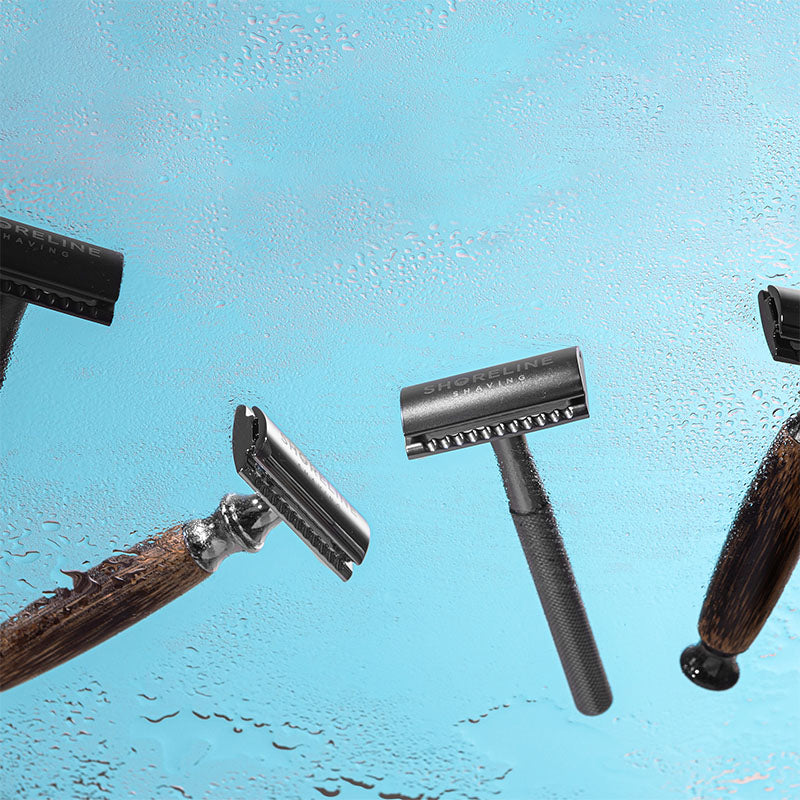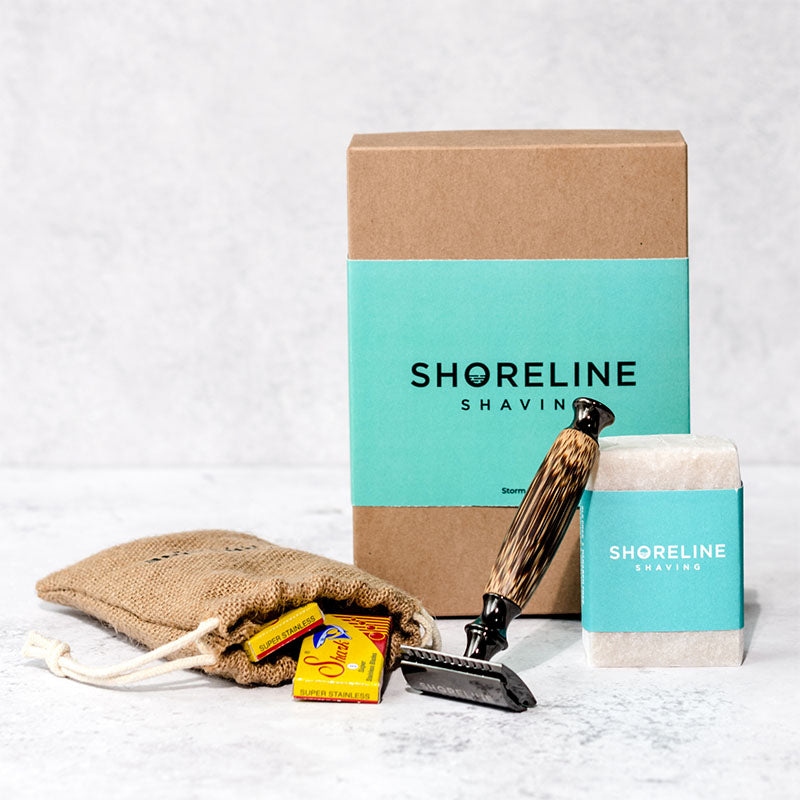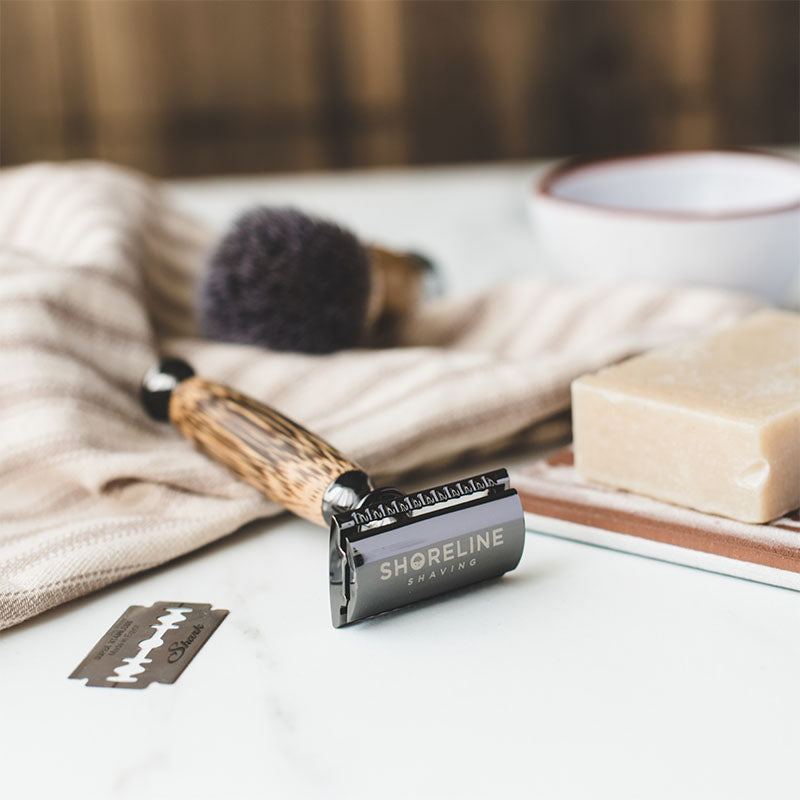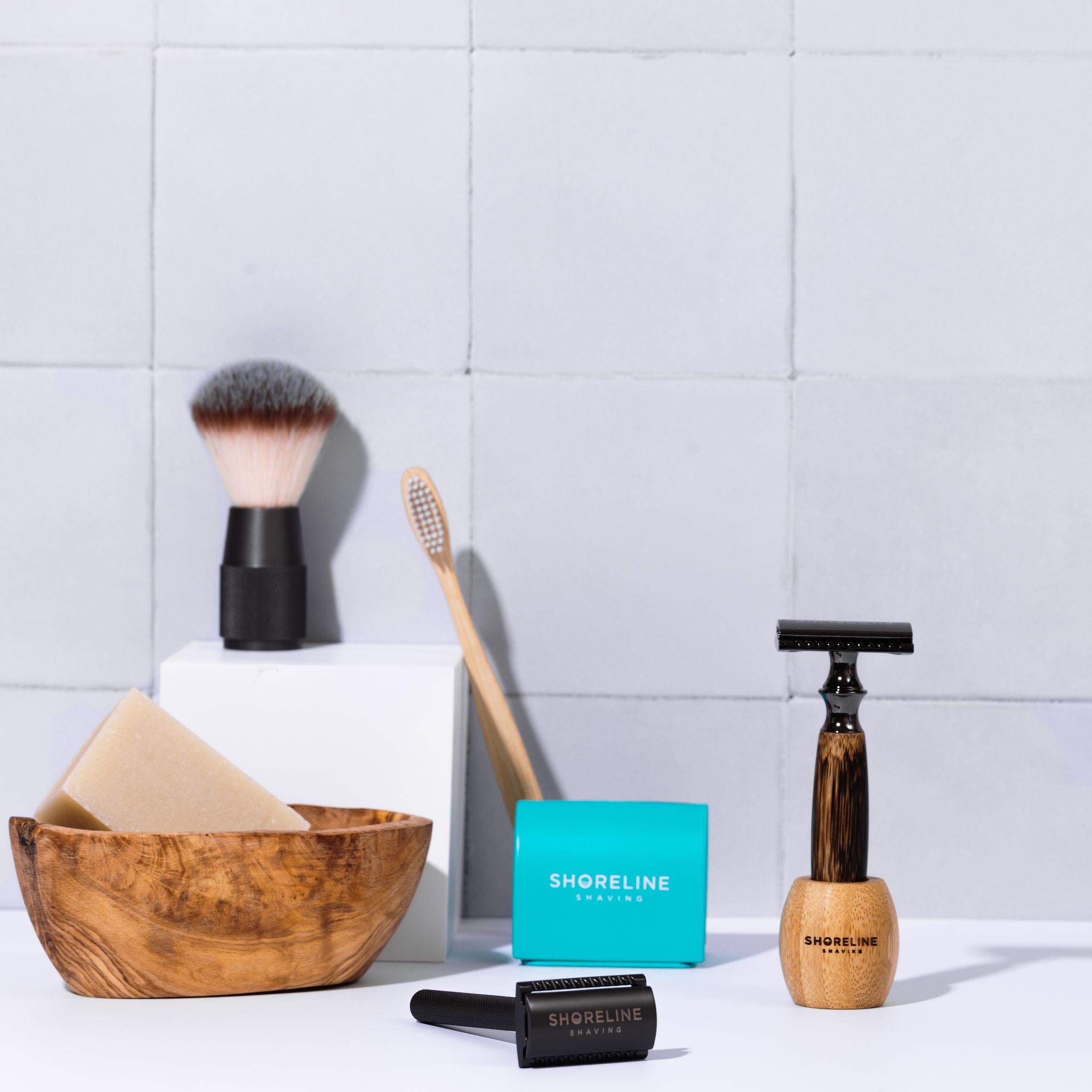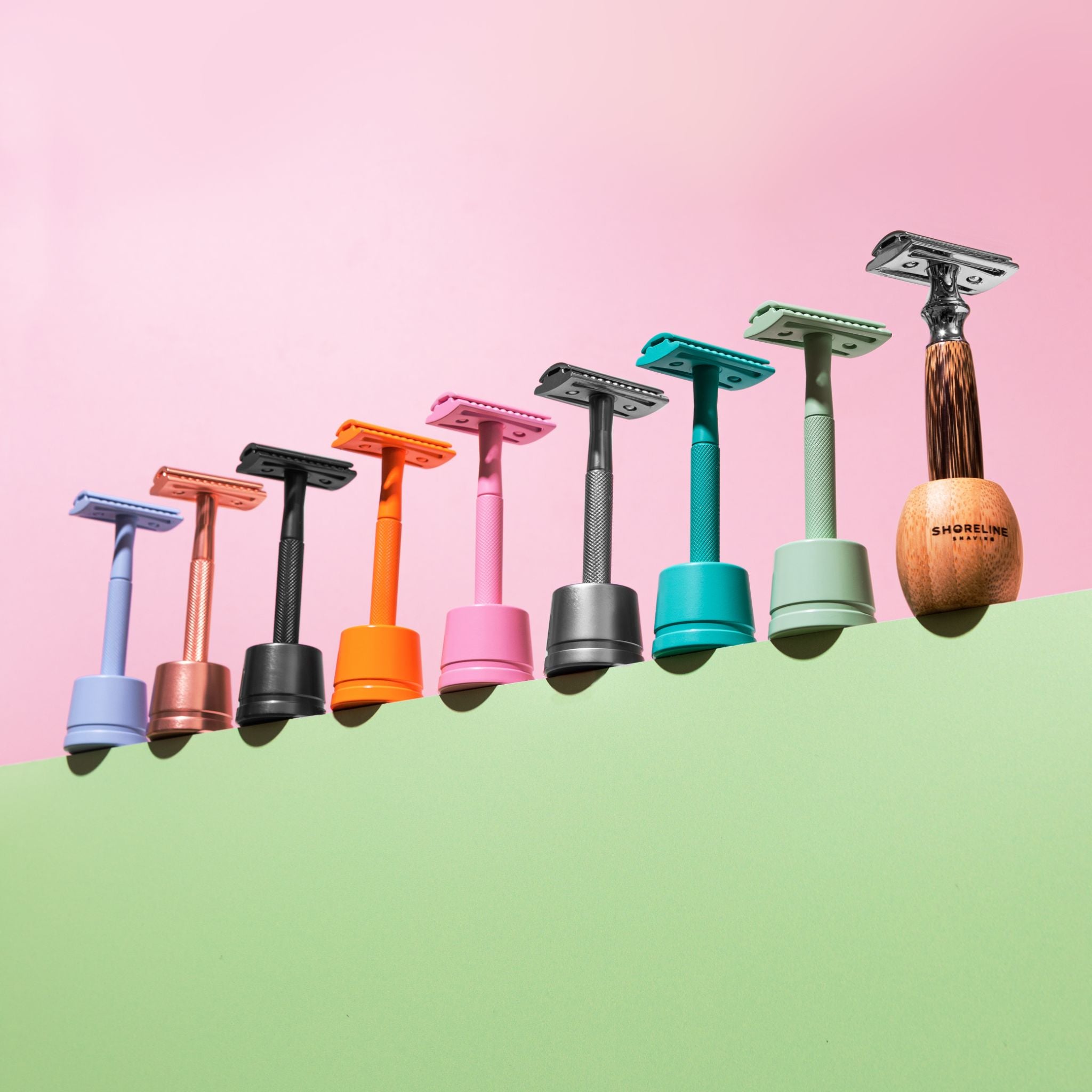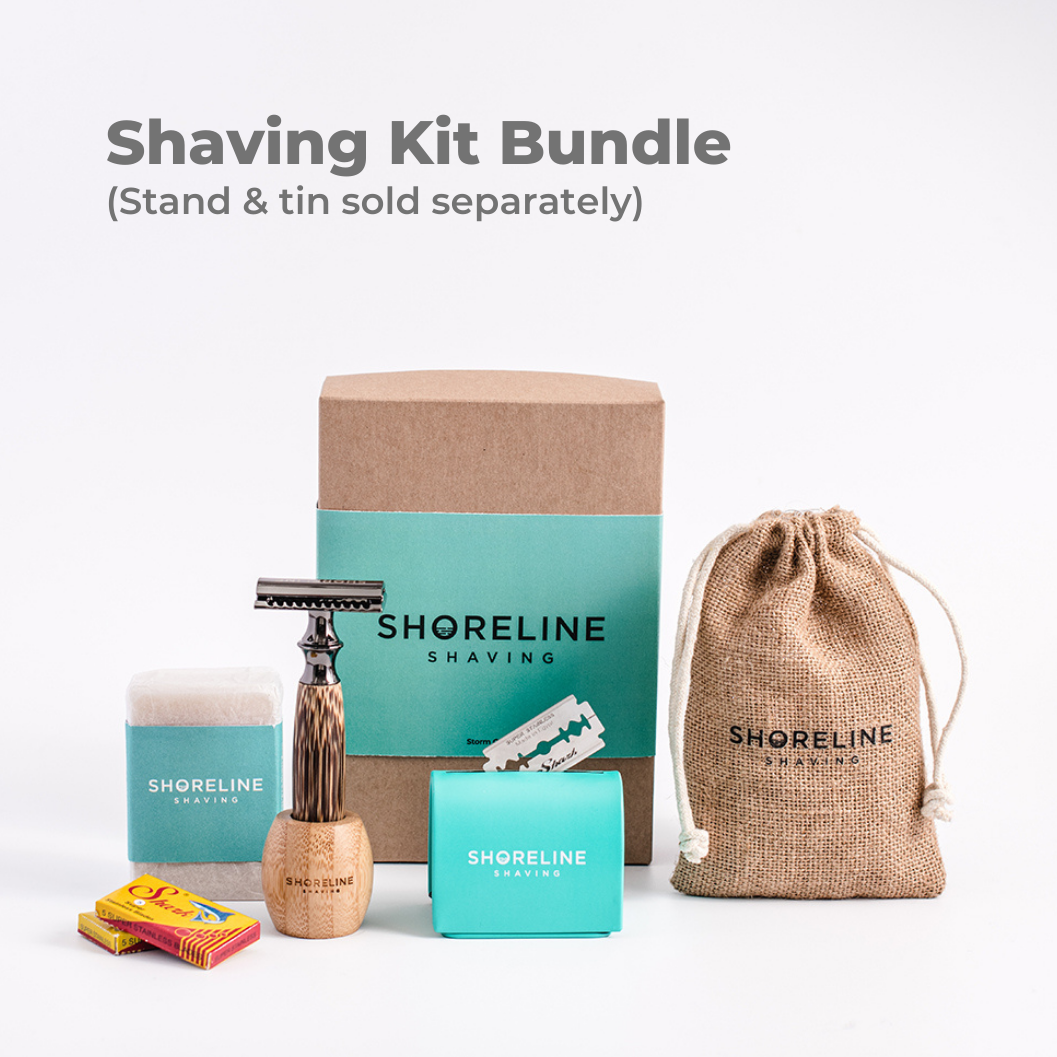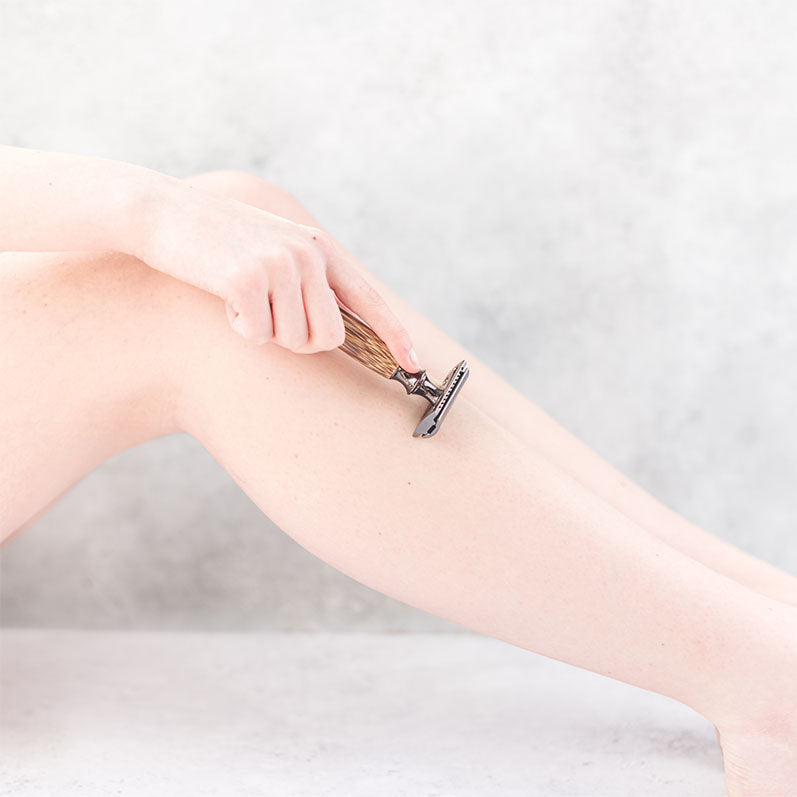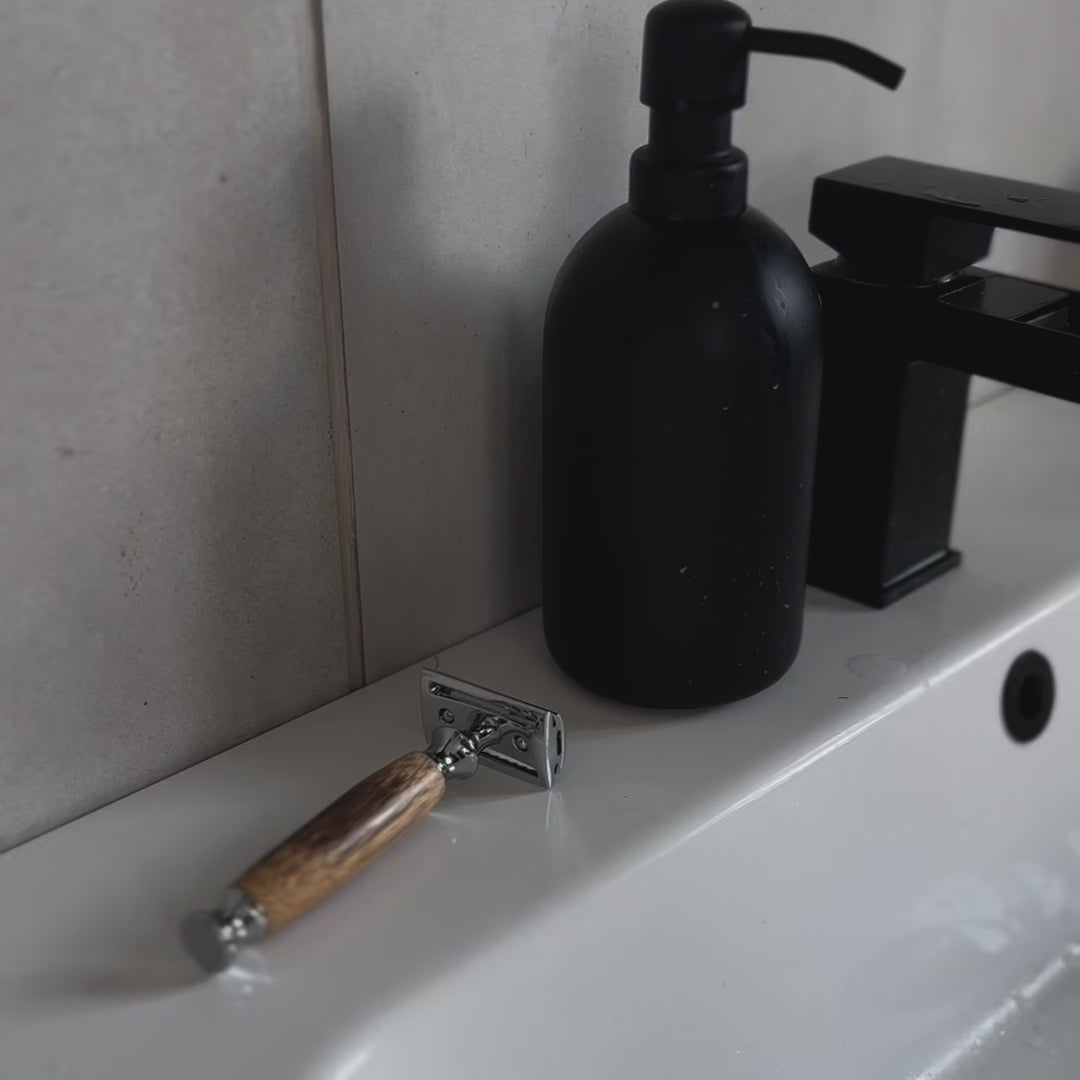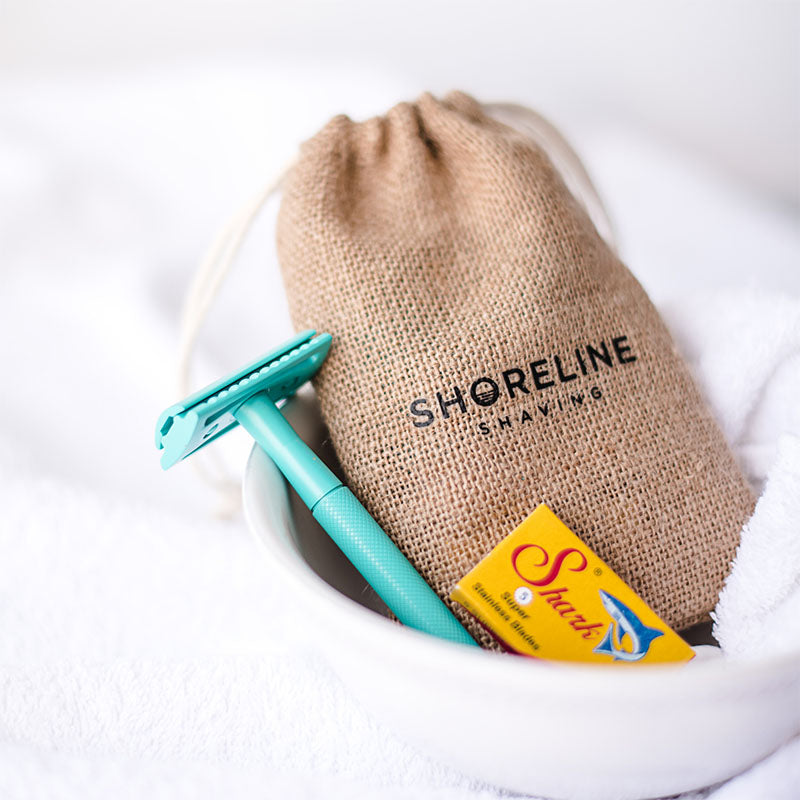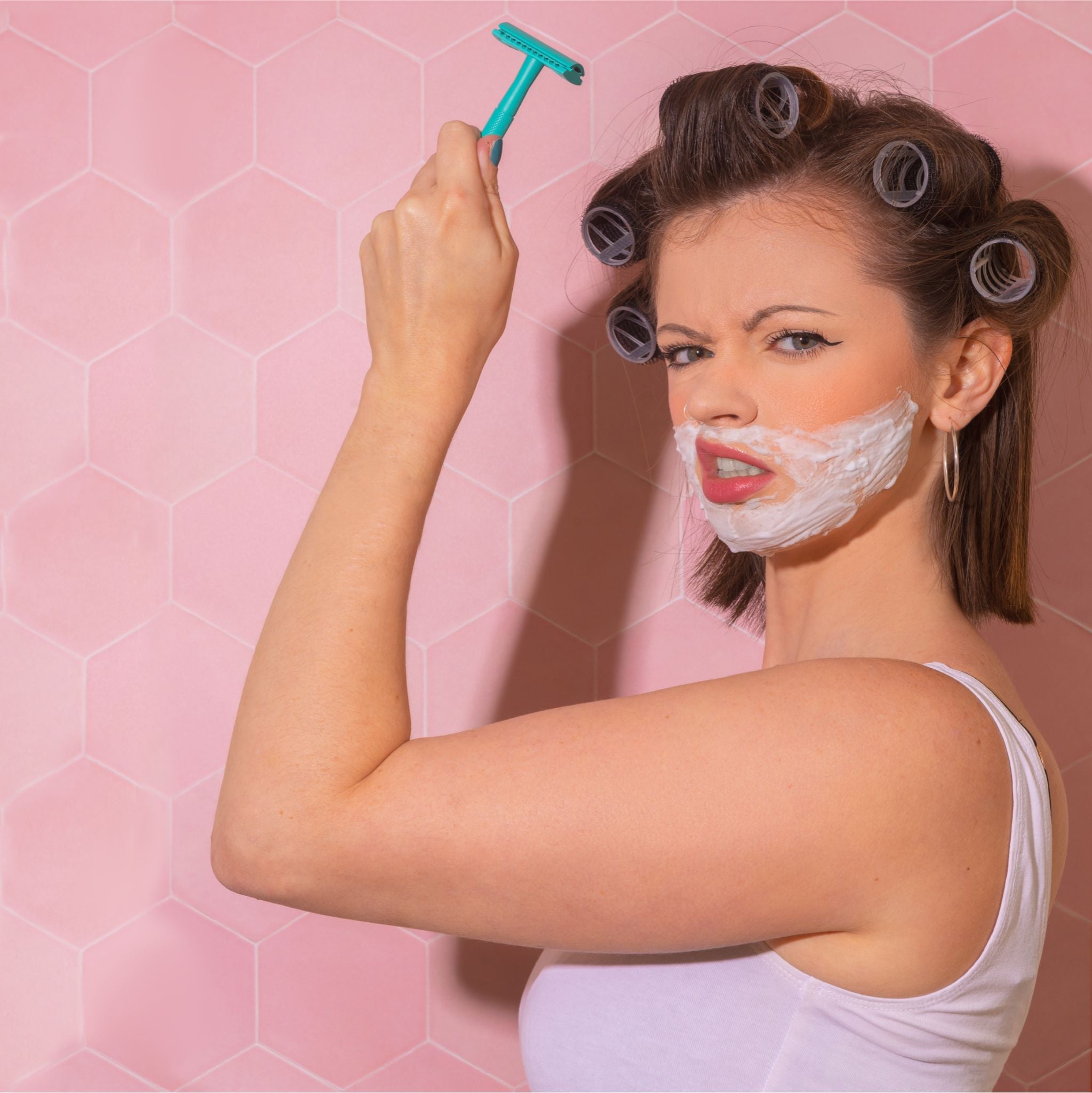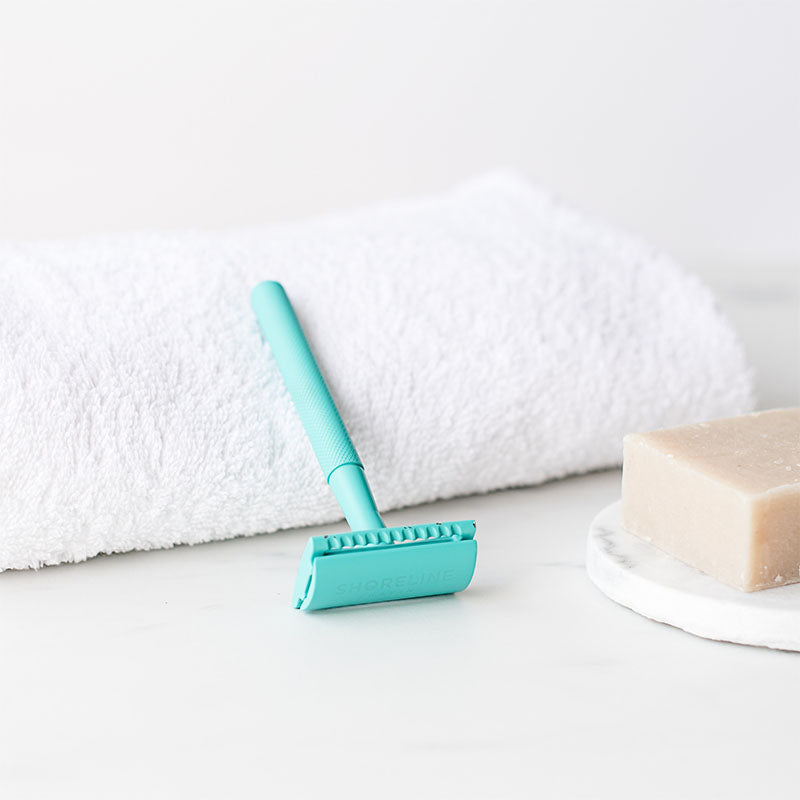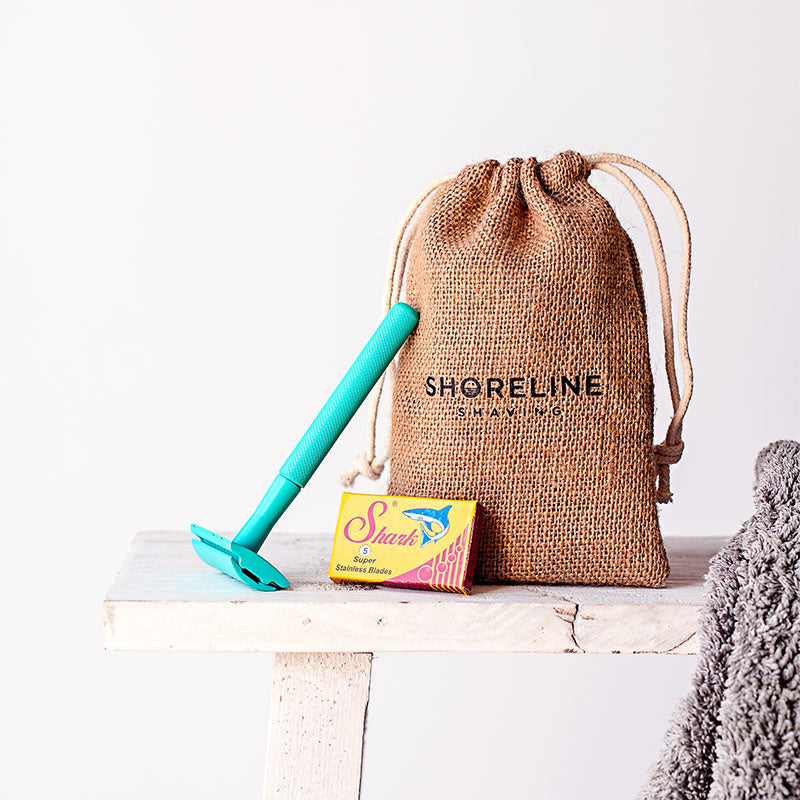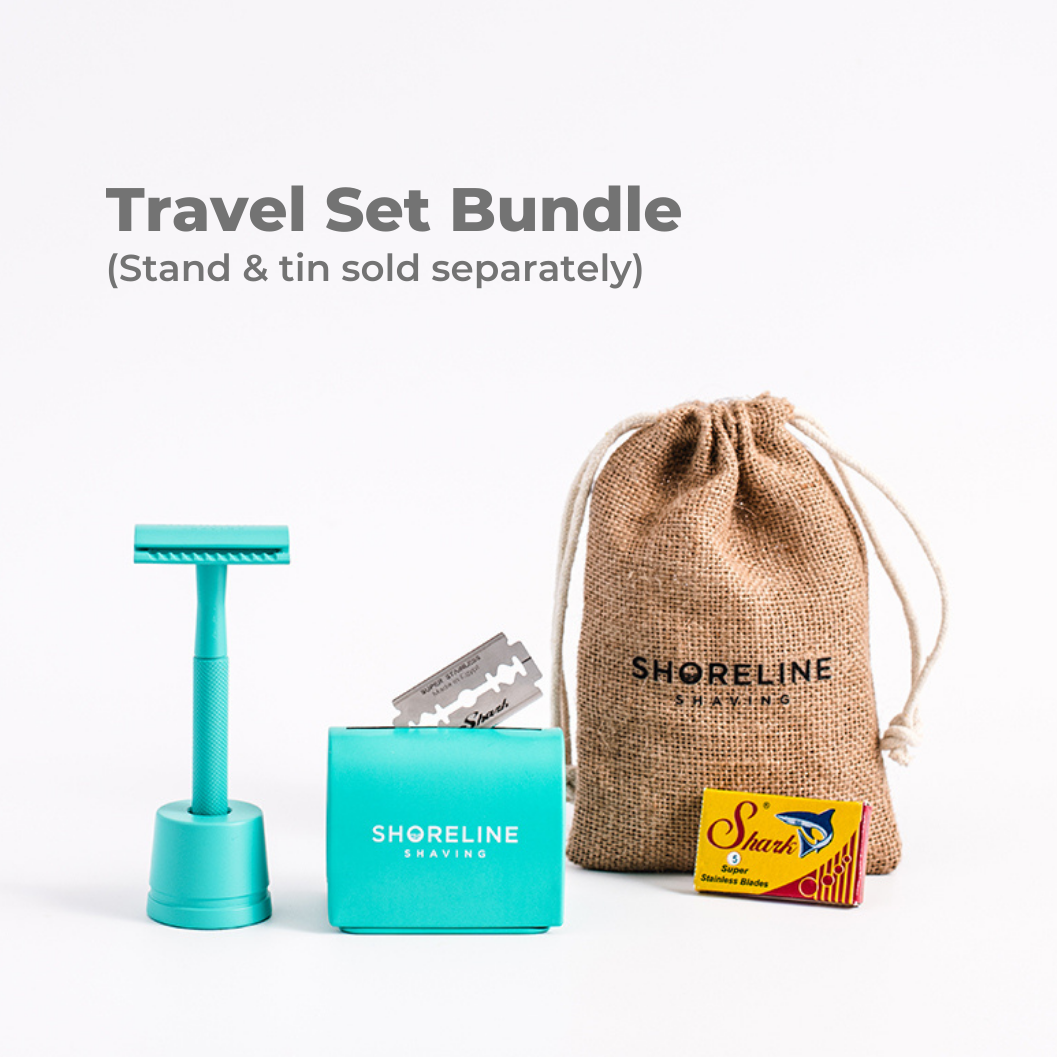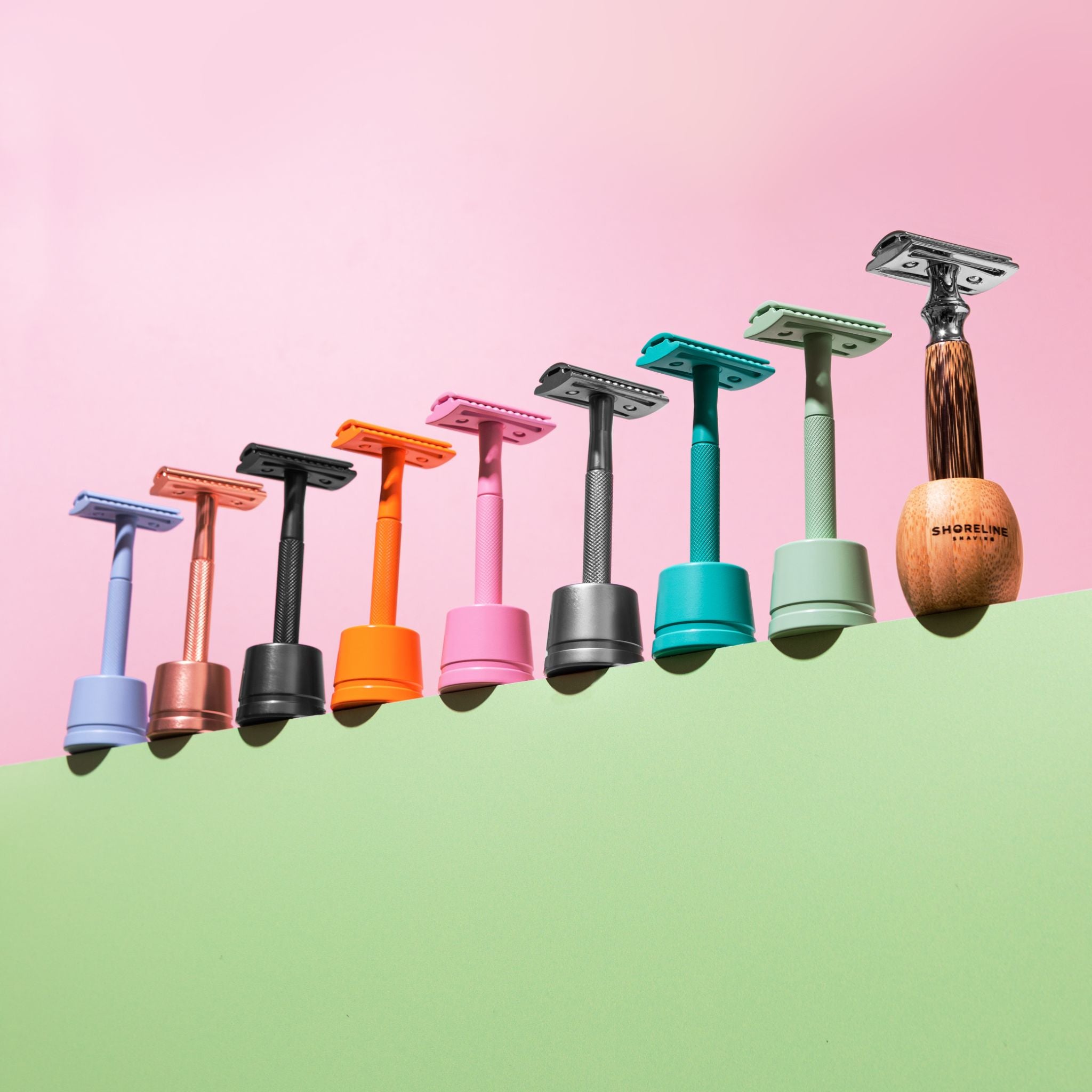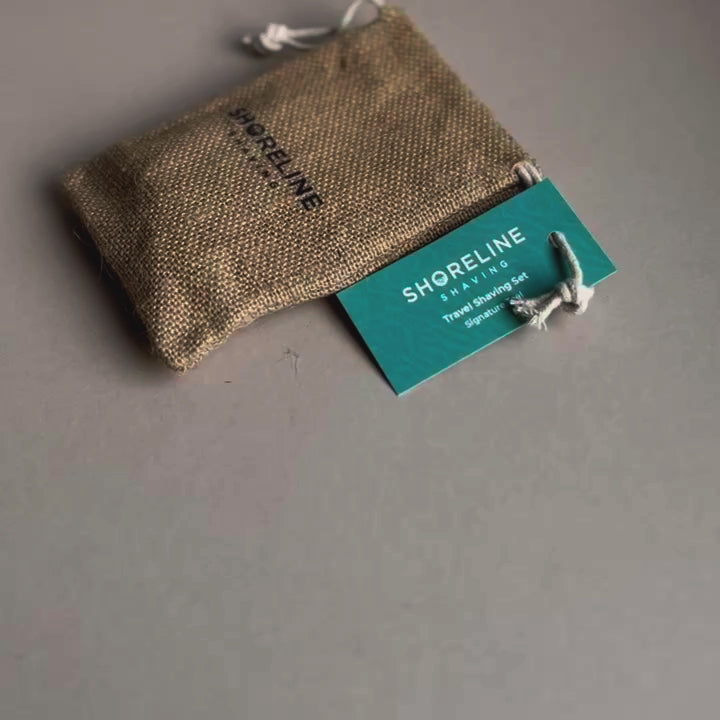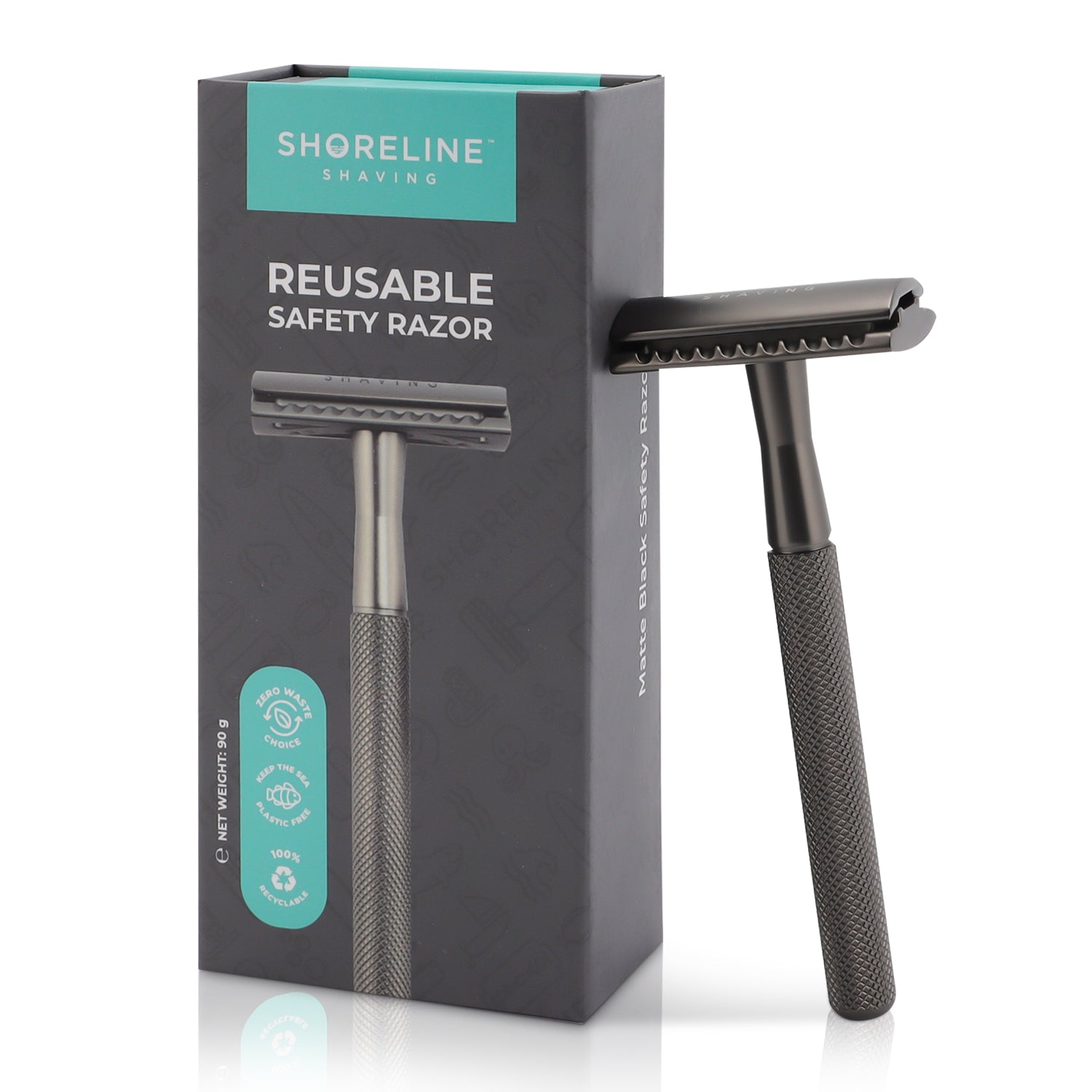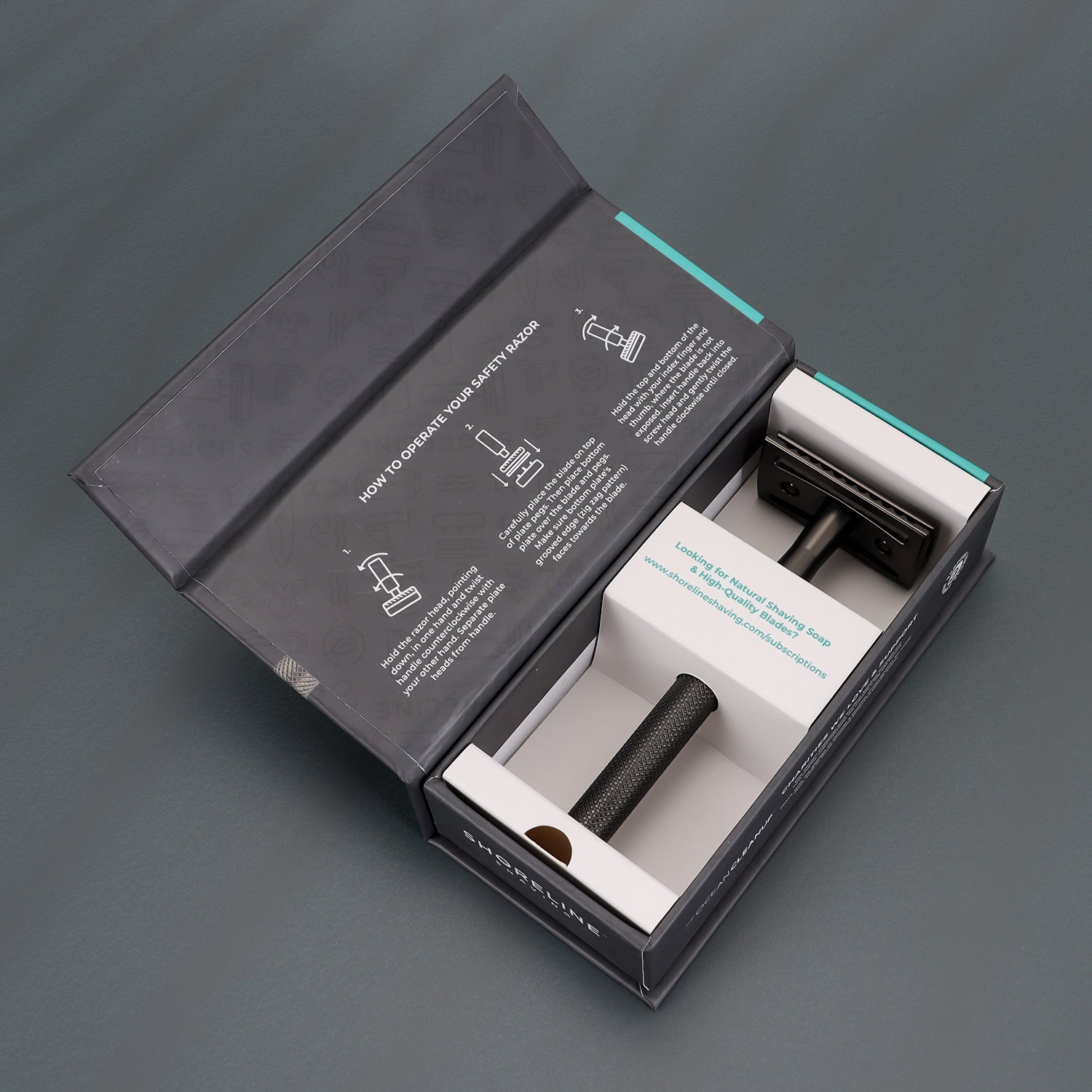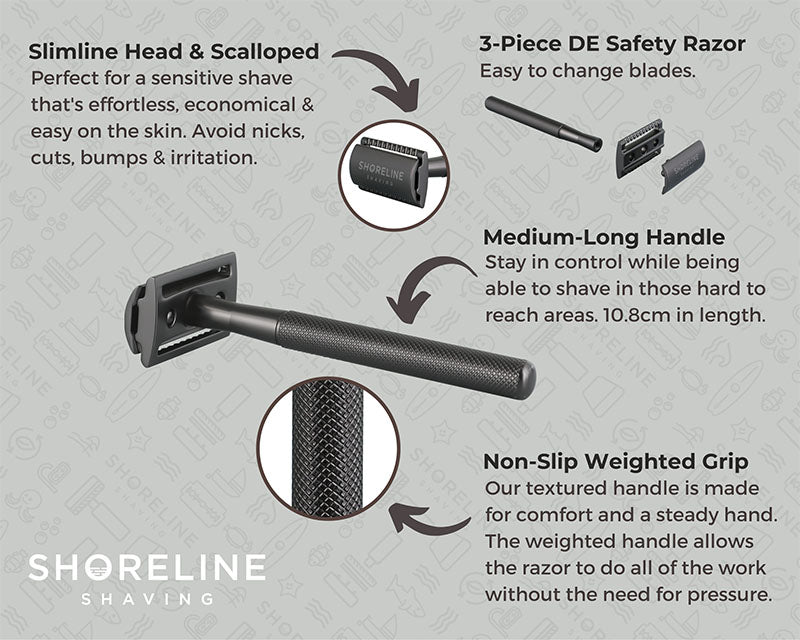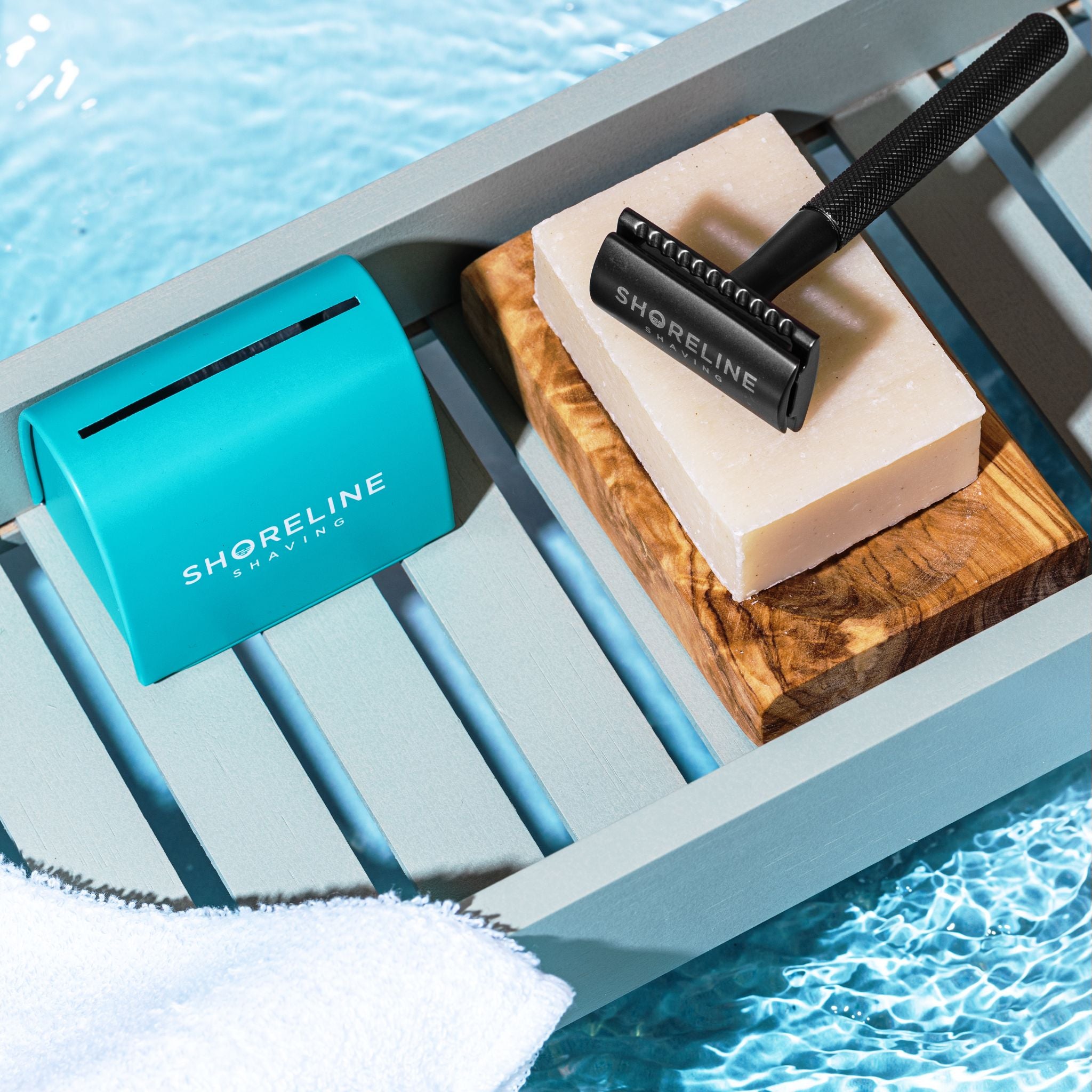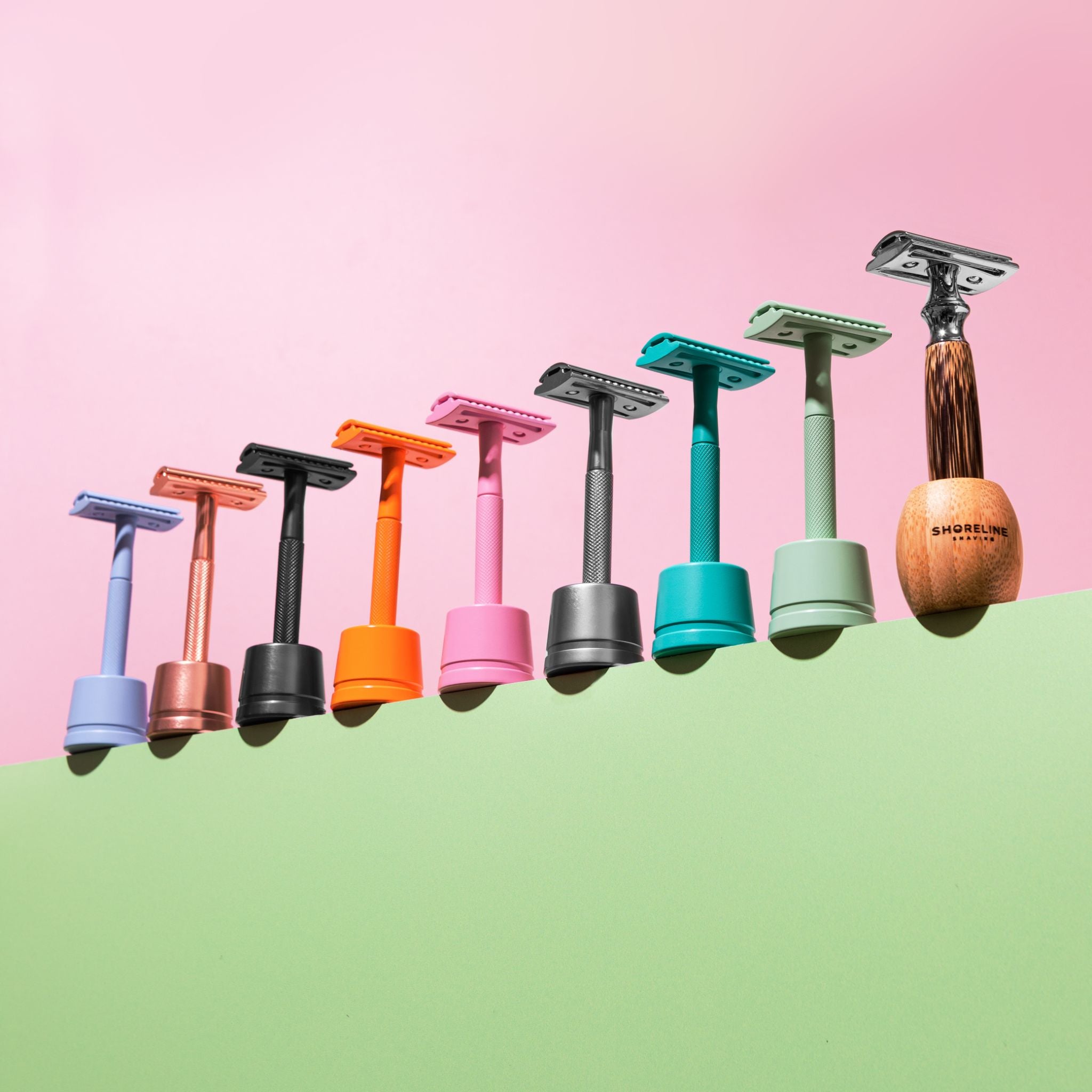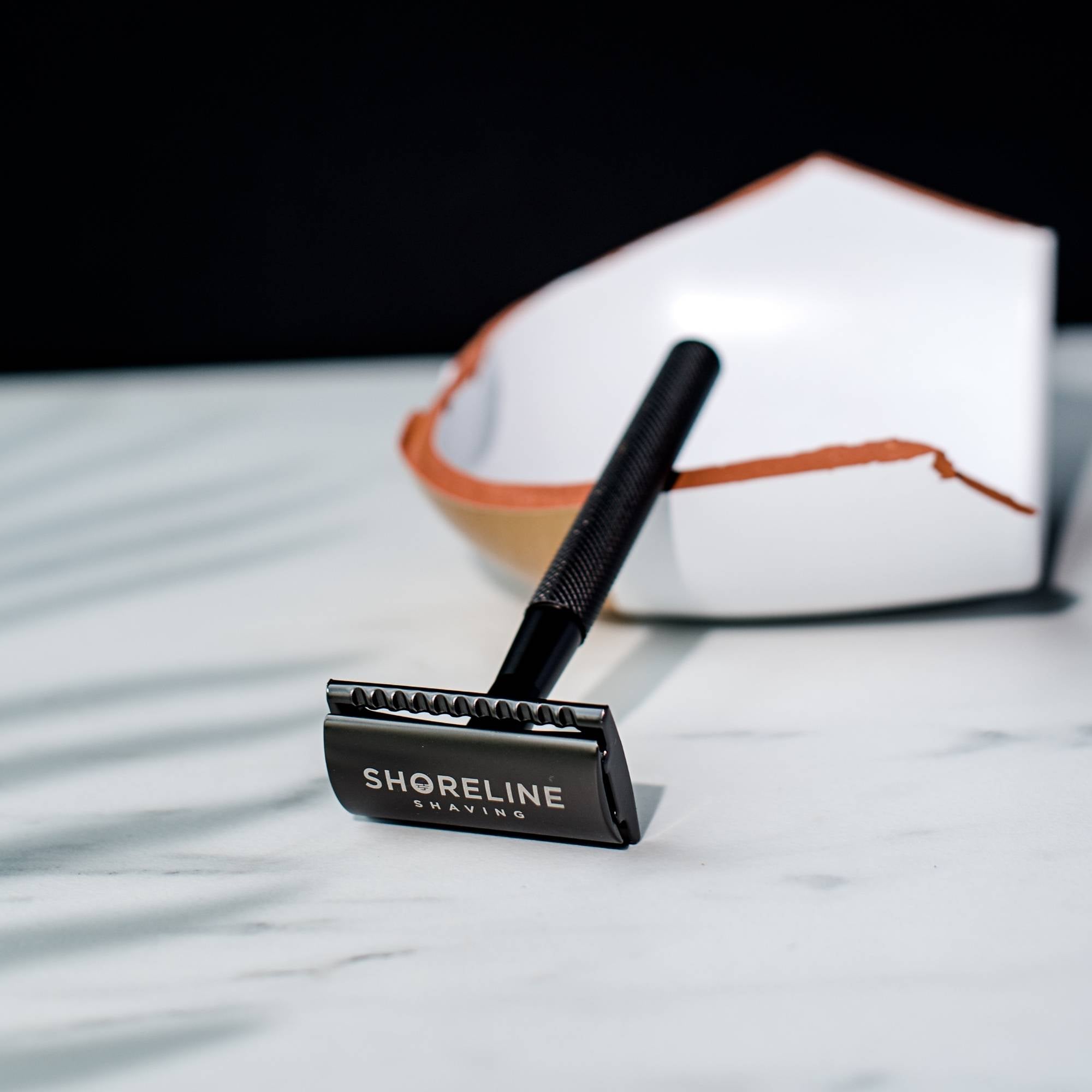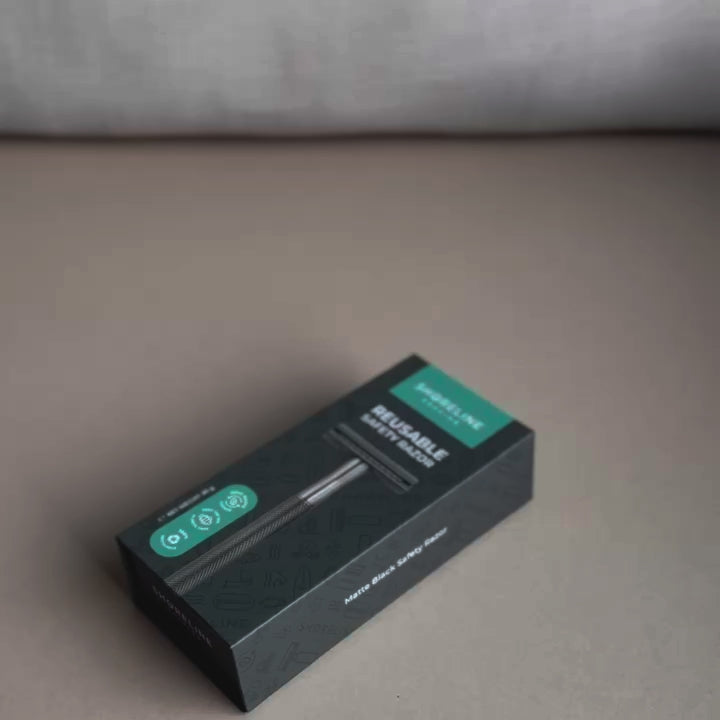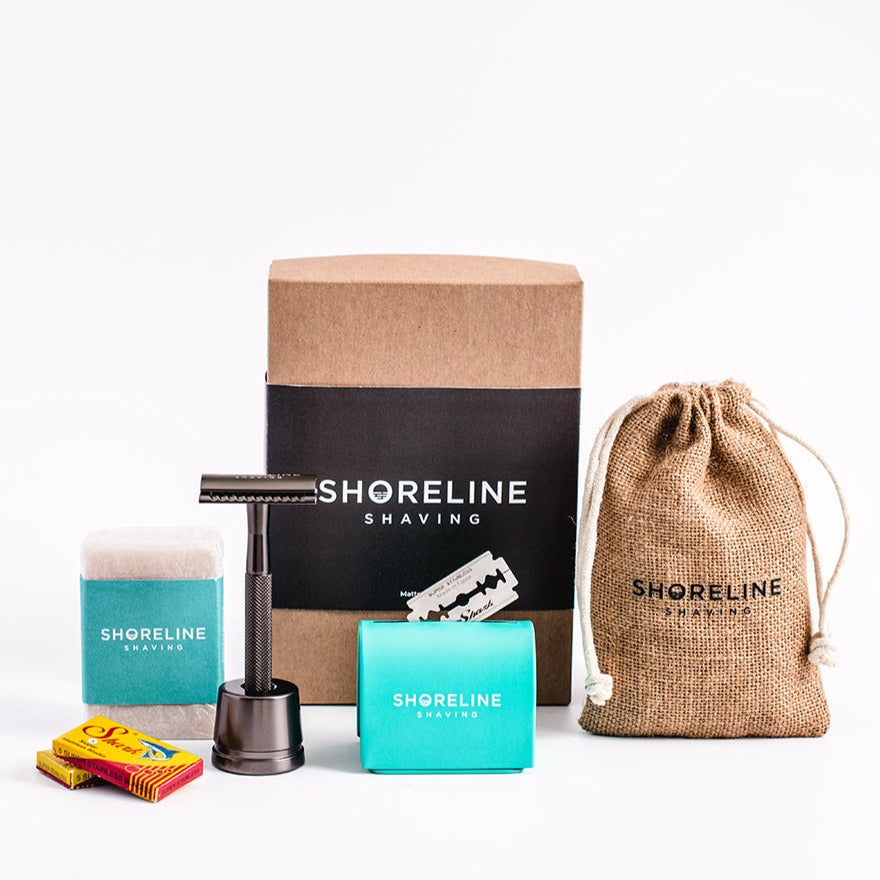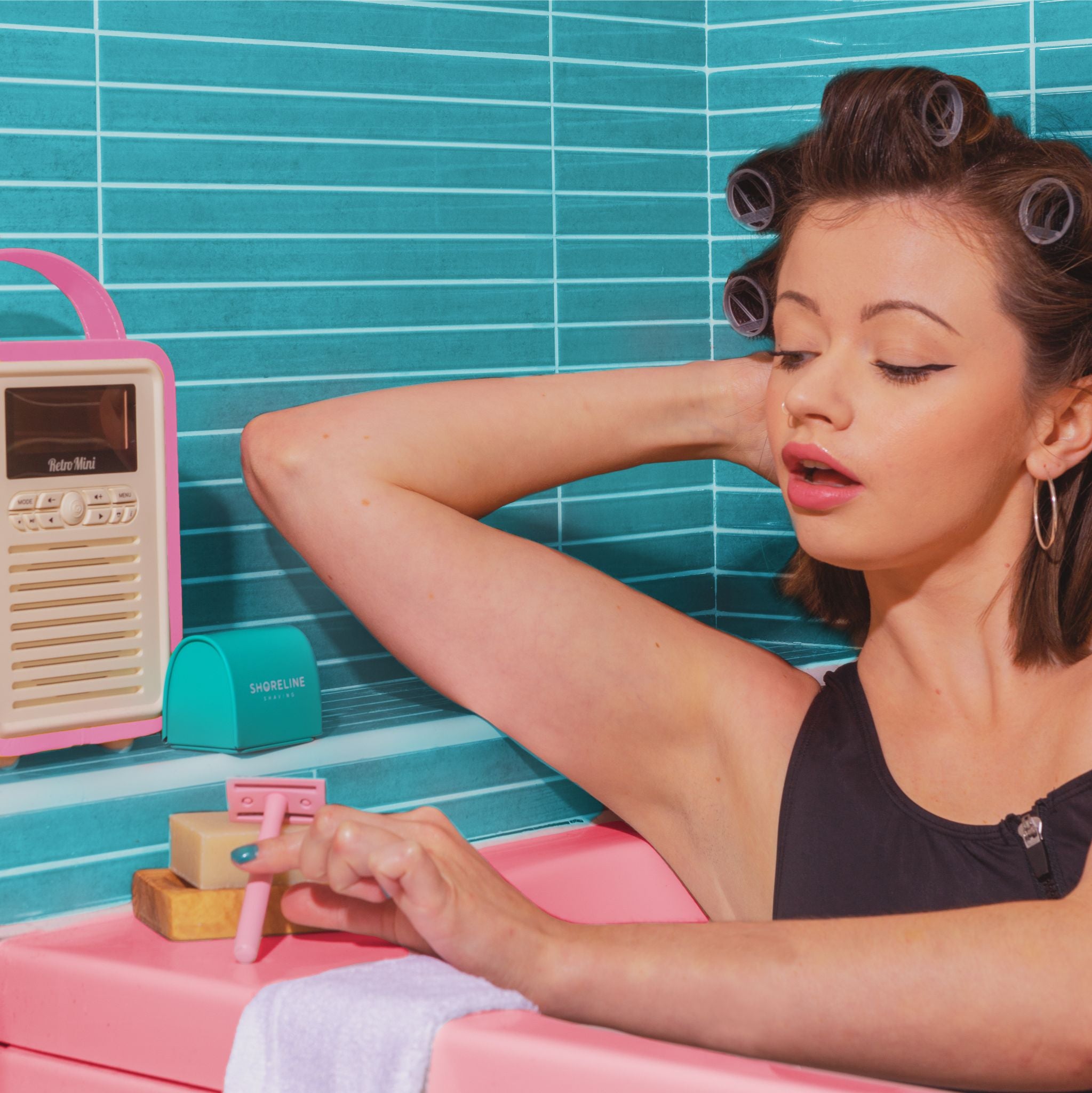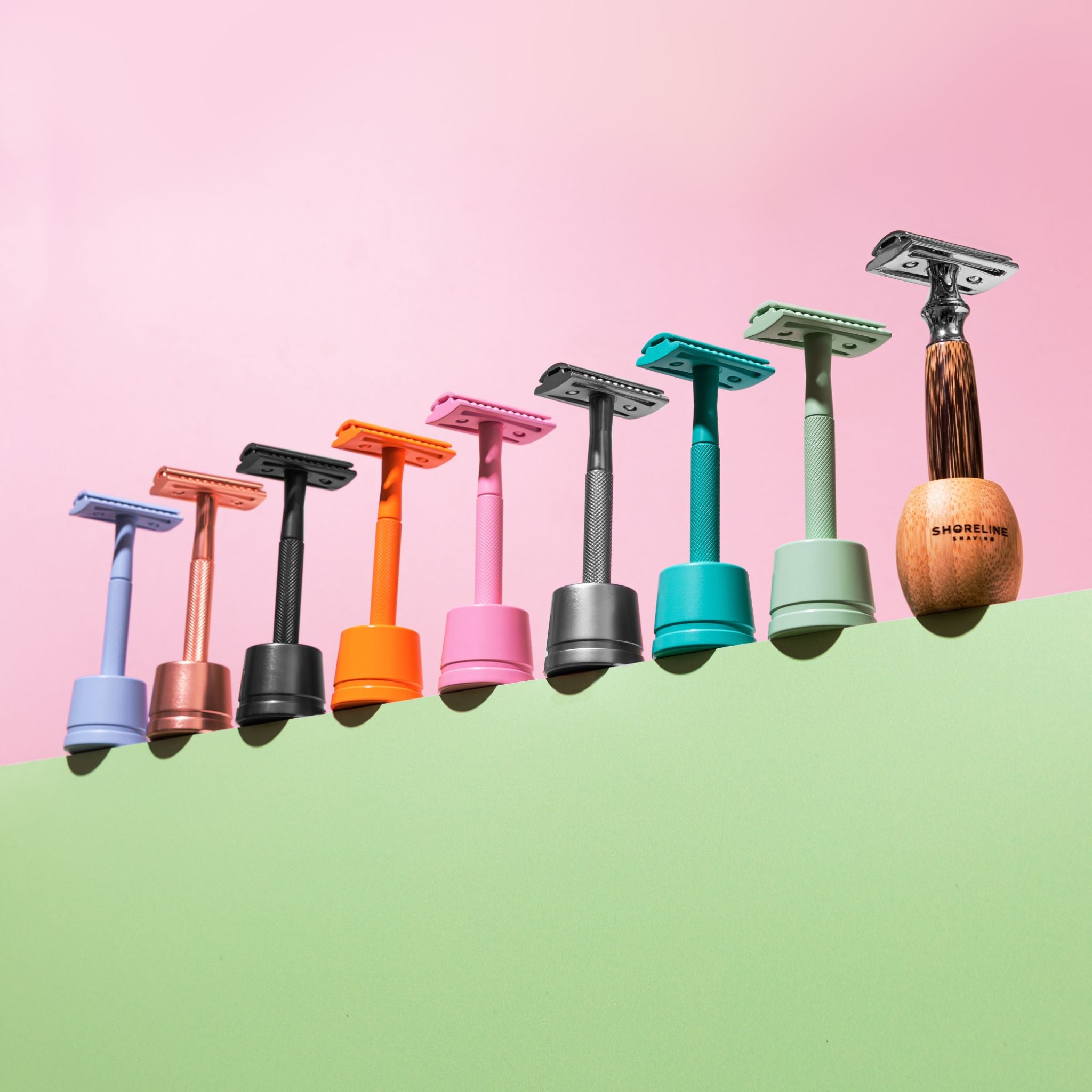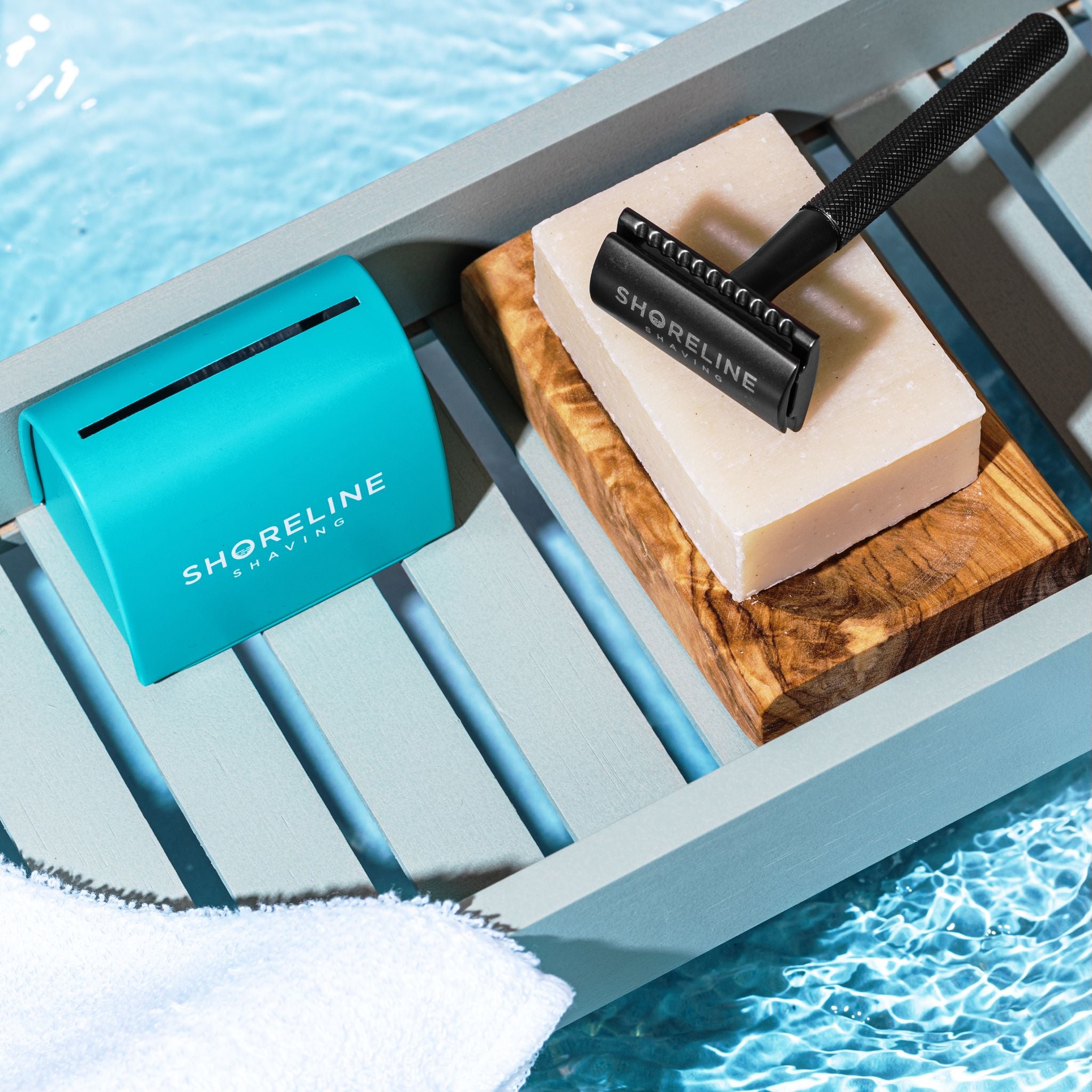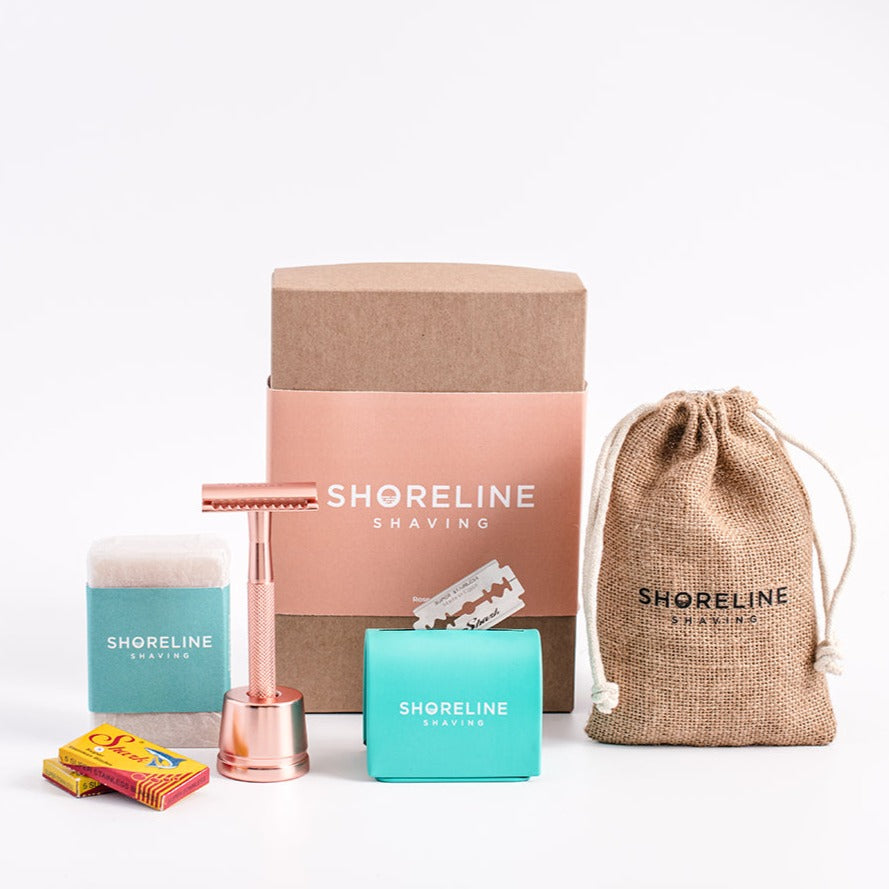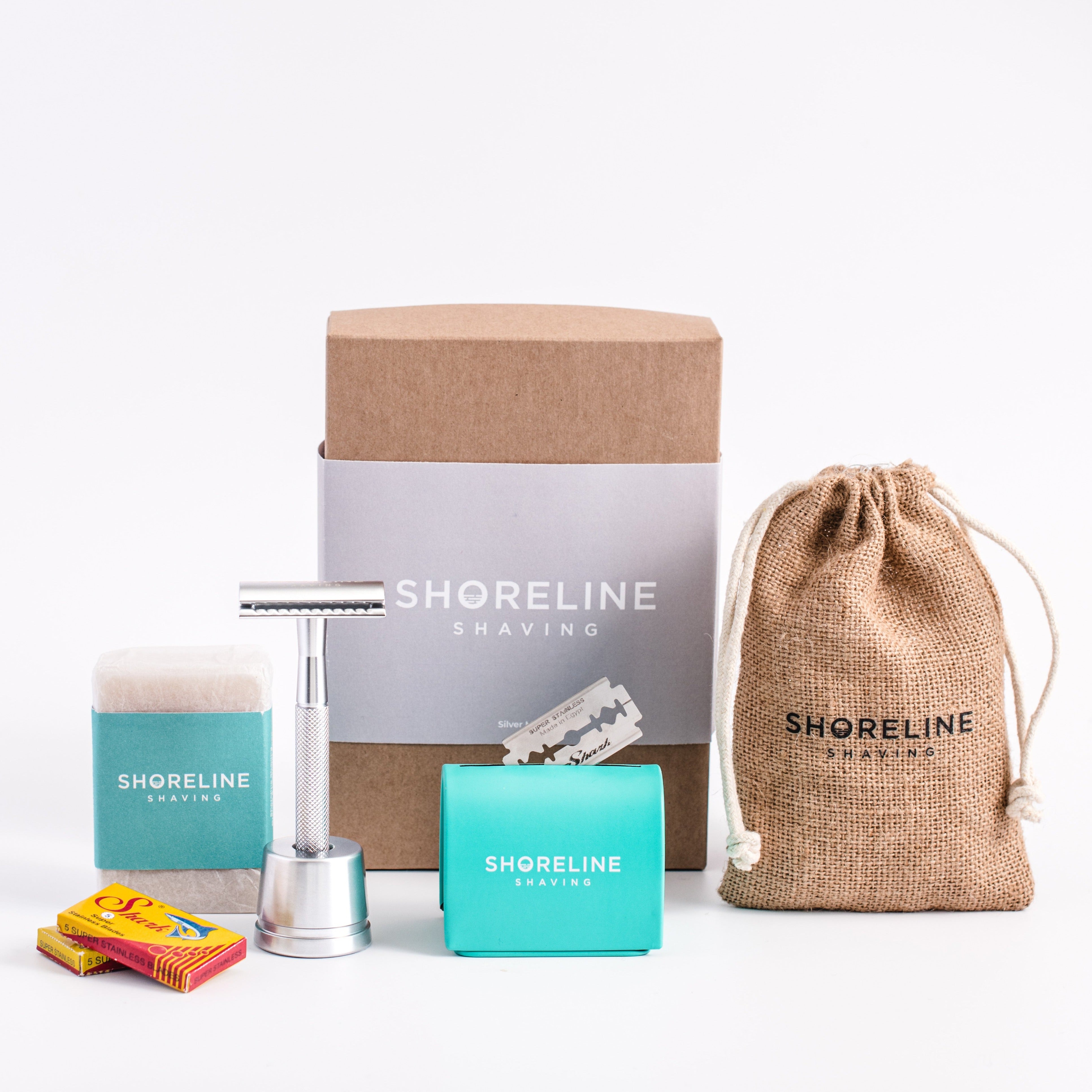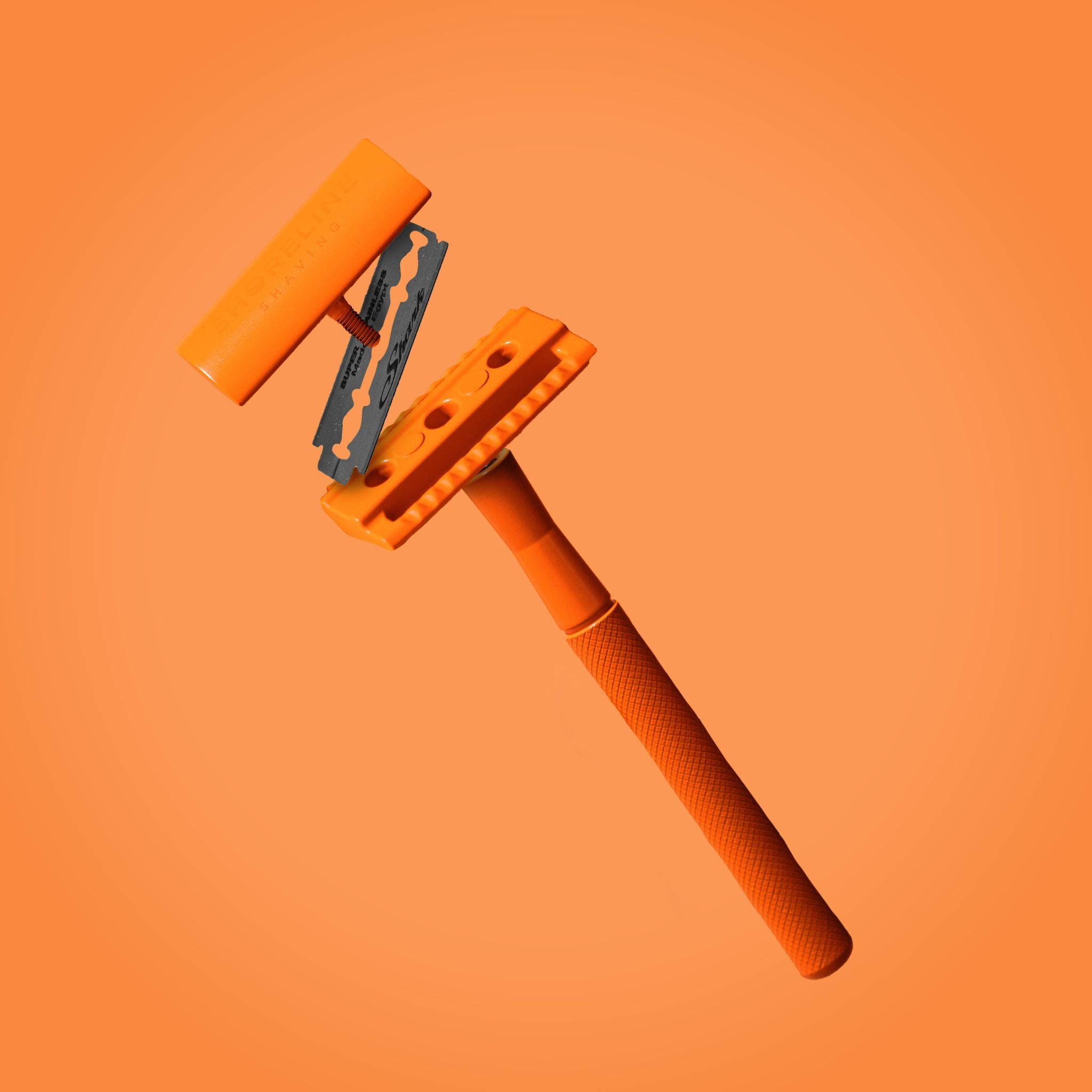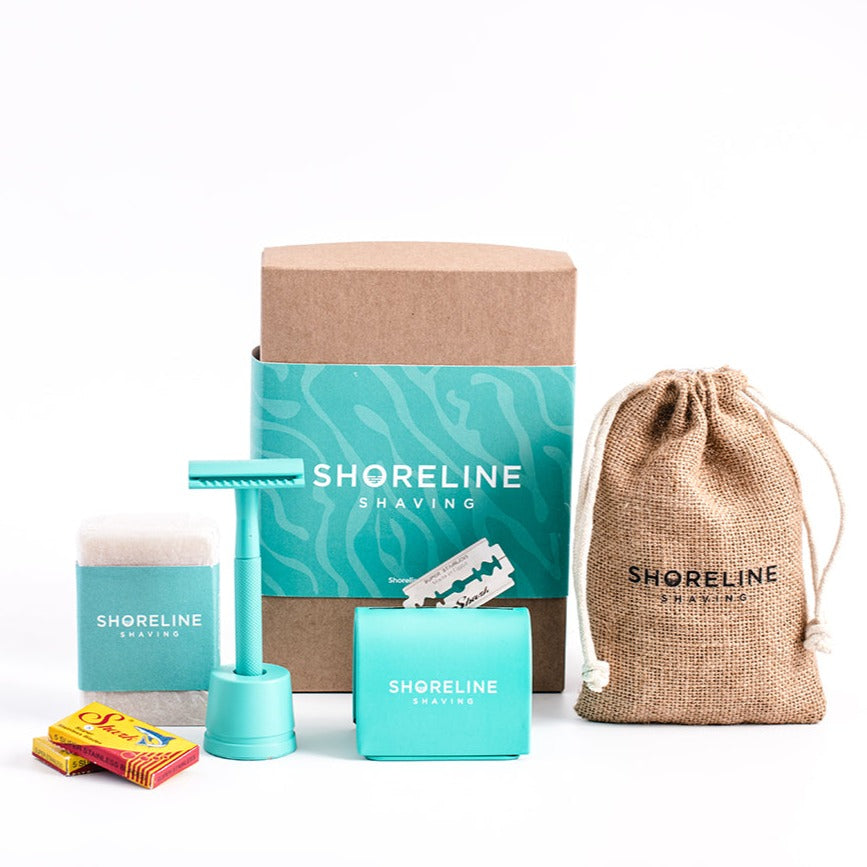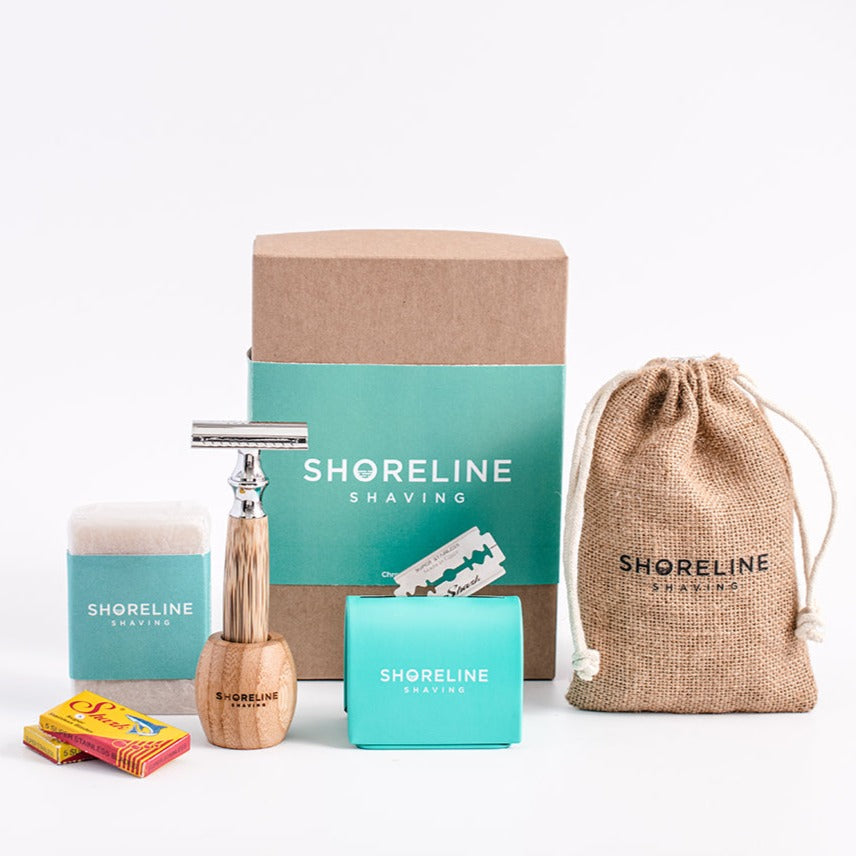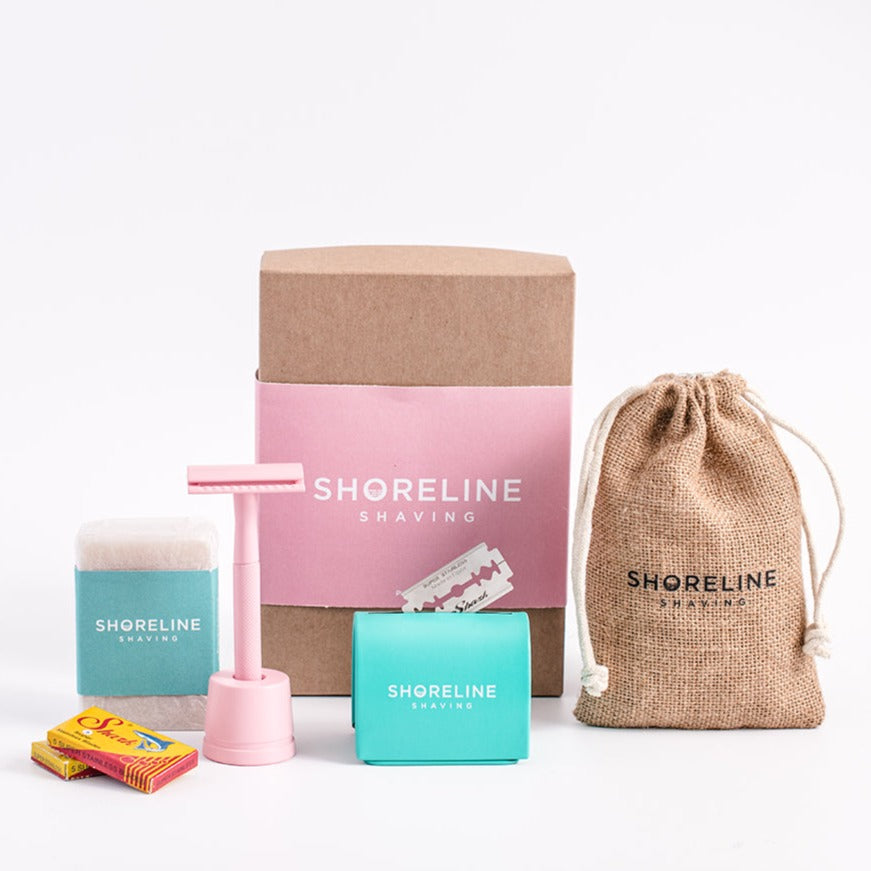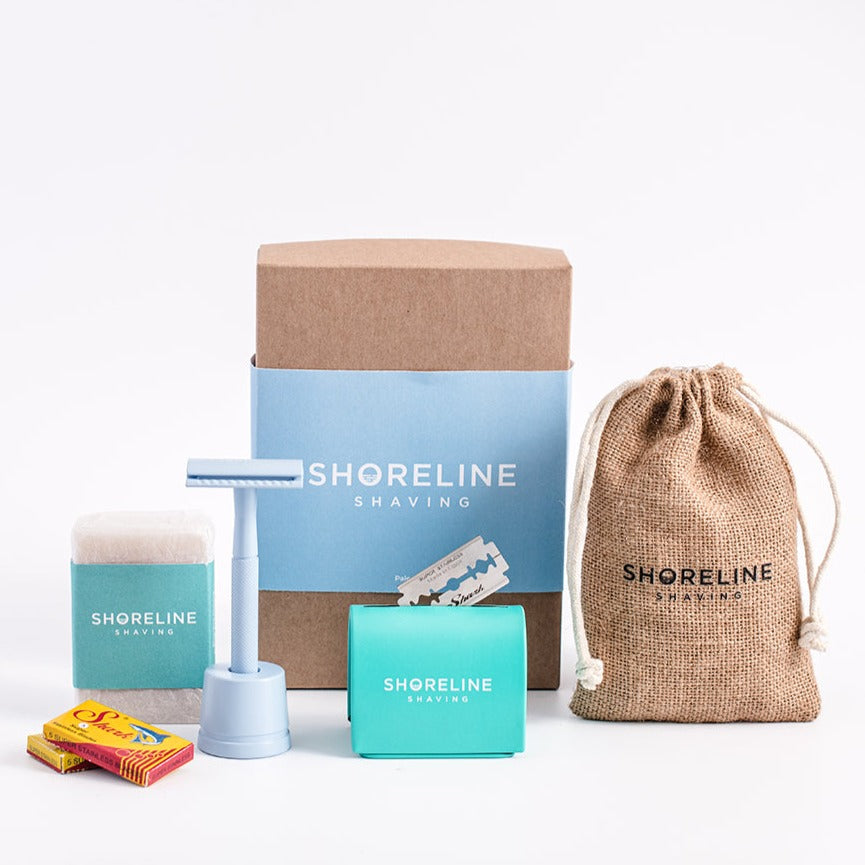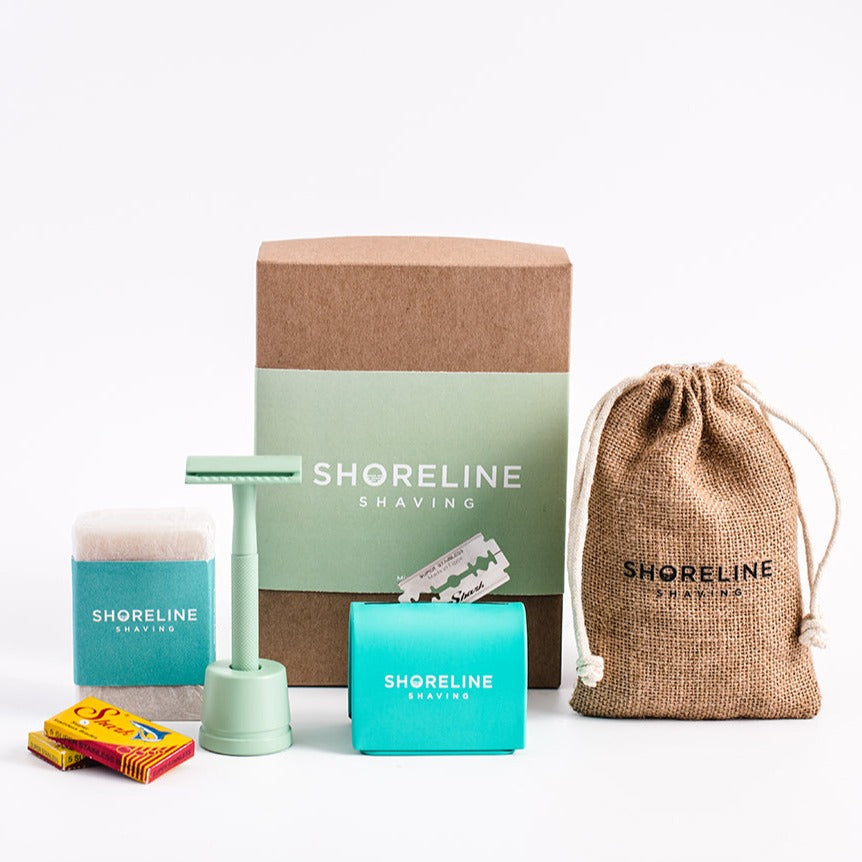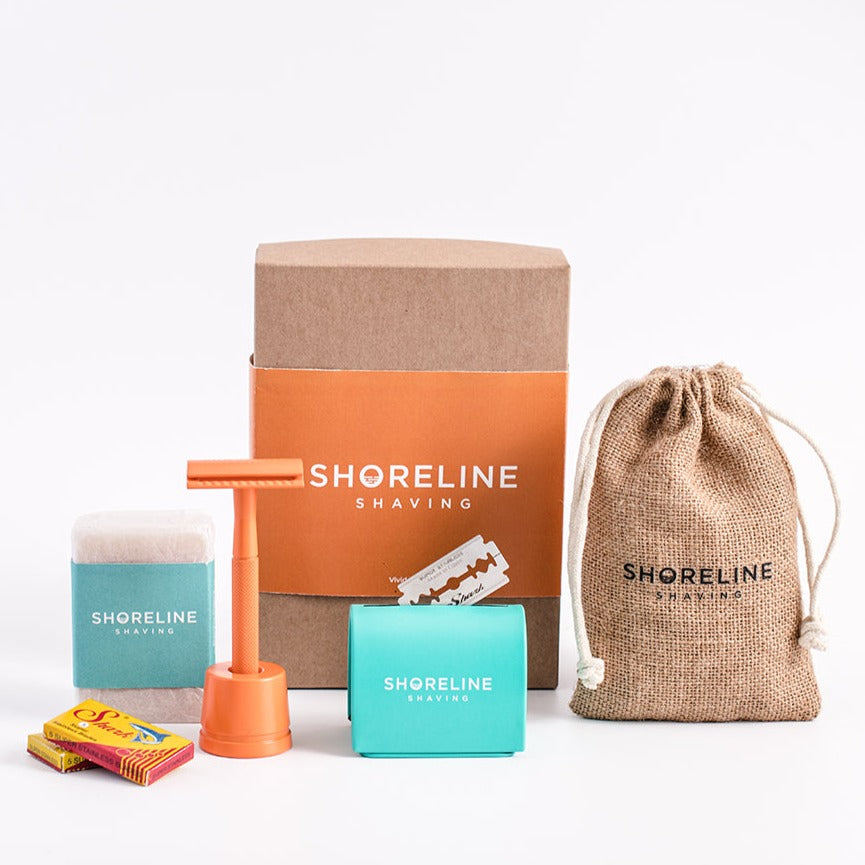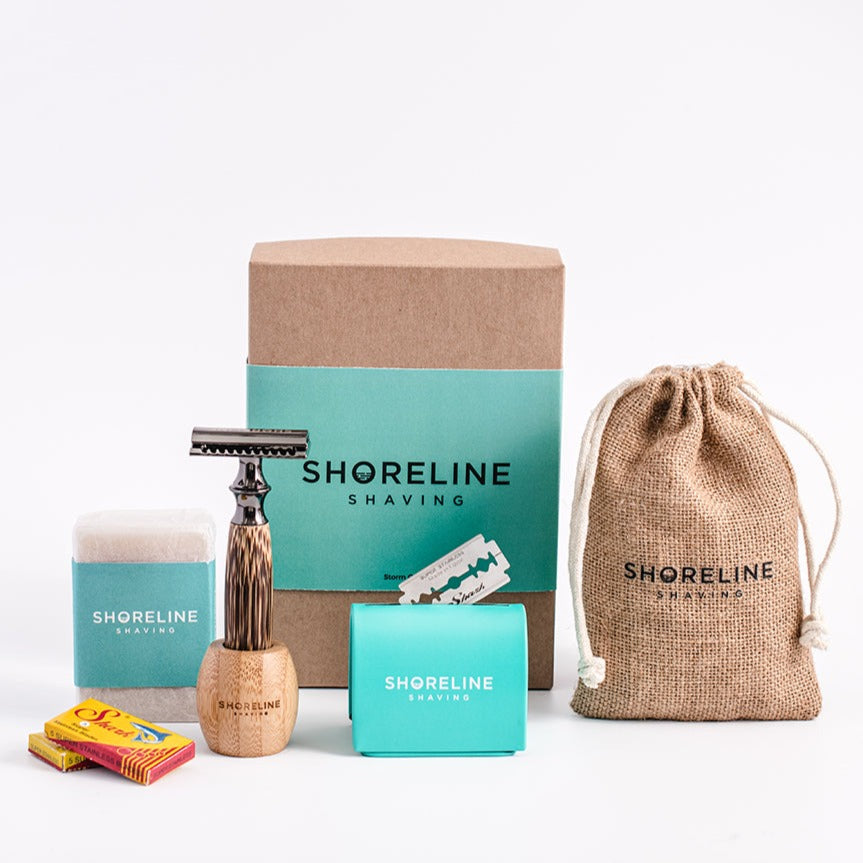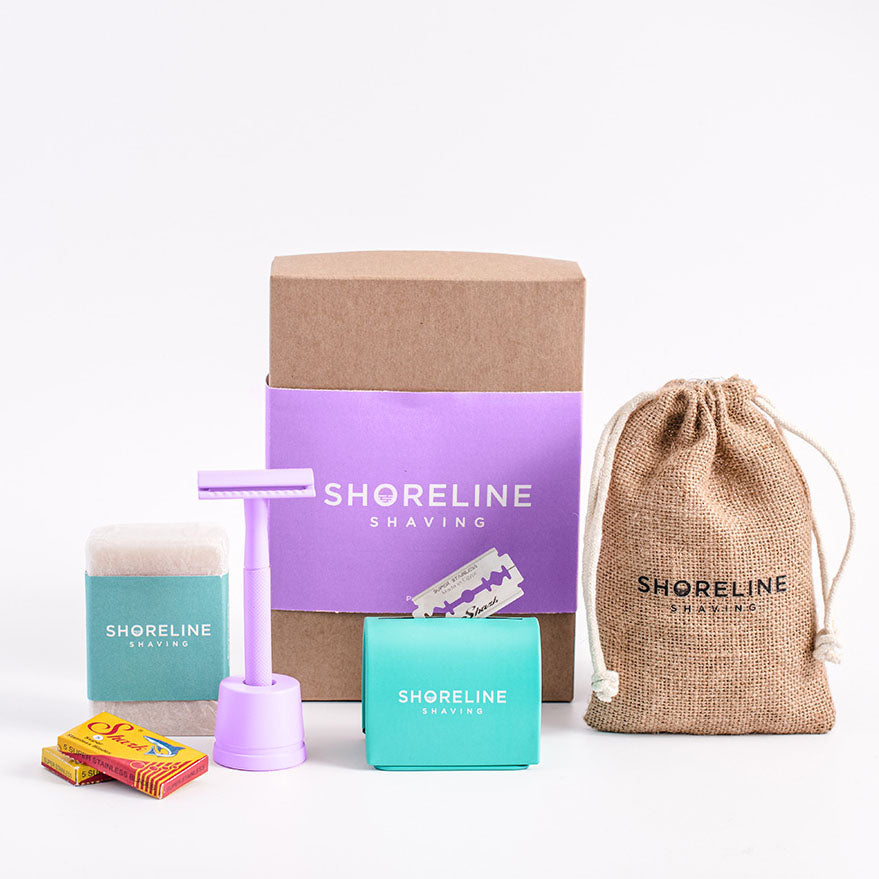The Ultimate Safety Razor Shaving Guide
A home for shaving tips, handy videos, guides, need to knows, shopping & more
Ready to start your eco-friendly shaving journey?
GET STARTED
How to assemble safety razor & fit blade
Remove Bottom Plate
Hold the razor head, twist the handle counter-clockwise and remove the bottom plate
Insert the Blade
Place the blade on to the head's pegs, reposition the bottom plate over the blade (scalloped edge towards blade)
Reassemble & Secure
Carefully grip the head's top and bottom with thumb and index finger, reattach the handle, and twist clockwise
4 essential tips when shaving (must read)
Direction
Understand your unique direction of your hair growth to avoid irritating your skin.
Prepare the skin
Open up your pores with a warm cotton flannel. Soften the skin with natural shaving soap.
Blade, angle, pressure
Always use a blade that's sharp, never blunt. 30 degree angle. Apply little to no pressure.
Aftercare
Rinse area with cold water after shaving. Pat dry with a clean flannel. Apply natural balm or moisturiser.
Shaving with a safety razor for the first time?
If you're a beginner to this essential new skill, learn how to safely shave with a double-edge razor without cutting yourself.
Our guide on how to use safety razors will have you clean shaven in no time!
Video: Review & How to use a DE Safety Razor
Created by Charlie from Life Before Plastic
Learn more about
Shaving with a Double-Edge Safety Razor
Including guides, comparisons & more
How to Recycle Your Old Blades
Disposing of your used double-edge blades is one of the most important parts of sustainable shaving. Not only should you change your blade regularly for an optimal shaving experience, you should store old blades safely and make sure you're recycling them in the correct way.

- Safely store used blades
Once you're finished with your old double-edged blades, it's important to store them in a safe place like a blade bank. This is usually a metal tin with a small hole in the top, which safely stores your used blades.
Carefully place your used safety razor blades in the entry slit on top of the tin. When the tin is full, paper tape over both the entry slit and the bottom of the tin.
- Check with your local recycling centre
Please check with your local recycling centre before disposing of the full blade tin in the scrap metal section. This is because PTFE coated blades are more difficult to recycle and some recycling centres won't recycle them.
The Shaving Kit: Everyday Essentials
Putting together a shaving kit that's sustainable is easy these days. You no longer have to pay a pretty penny for disposable razors and blades every week. Eco-friendly and reusable shaving products are readily available, so you'll never have a problem getting everyday essentials for your shaving kit.
- A reusable DE safety razor
For those who are new to shaving with a double-edge razor, start with a safety razor that is closed combed with a grooved or scalloped edge to the safety bar. These razors are perfect for daily shaving and less aggressive than open comb razors. Closed comb razors are much safer.
- Natural shaving soap
Opt for shaving soap that's free from chemicals and nasties, and full of natural ingredients. Your skin will thank you for it. Many natural shaving soap bars are free from plastic, too.
- Sharp double-edge blades
Not all safety razor blades are made the same. A blade's aggressiveness and coating can differ. As a rule of thumb, those with finer hair or sensitive skin should go for a blade that's less aggressive. Those with coarser hair should go for a blade that is sharper and aggressive.
- Razor storage
Your shaving kit will need to contain a box, stand or travel bag that will help protect your razor from moisture in the bathroom. Alternatively, keep your razor away from the bathroom after each use. This will prevent the blade from blunting too quickly and stop your razor from degrading.

|Other shaving products to consider. To prepare your skin before shaving, use a soft cotton flannel to open up your pores and soften the are of skin. Make sure to use a natural moisturiser or balm on your skin after shaving, especially for those with senstive skin. Many people prefer to use a shaving brush and bowl to apply soap or foam to their skin.
Are you still shaving with a disposable razor?
We compare reusable razors with disposable cartridge razors to see which is better for the planet, the pocket and the skin.
READ MORETravelling with a safety razor
Whether you're leaving the country for business or leisure, travelling with grooming products can raise questions and cause confusion. Here are a few tips you need to know when travelling with a safety razor.

- Blades in carry-on baggage
Double-edge safety razor blades are not permitted within hand luggage. If you want to take them on a plane, blades must be kept in your hold luggage. If you're taking your razor in your carry-on bag, make sure it has no blade inside.
- Taking shaving accessories
Shaving soap bars are ideal for carry-on or hold luggage, as they don't have a capped liquid amount of 100ml and are compact to travel with. A soap tin is also recommended for soaps that are already in use. Shaving brushes, wash bags or travel bags will also be really handy.
- Buying products on holiday
The good thing about shaving with a safety razor is that double-edge blades and shaving soap are available to buy in most major supermarkets. You could even find your nearest plastic-free or eco shop with a little research. Pack your safety razor and travel bag, and enjoy your holiday!
|Alway double check with the airline & airport. Even though we've provided a general rule of thumb for travelling with safety razors, it's best to make sure before you travel. UK airports, for example, currently only allow liquids to be a maximum of 100ml. But this may be changing in 2024. Visit your departure airport's website, as well as your airline, to stay up to date.
Getting the basics of a travel shaving set
It's as simple as owning a safety razor, having blades and something to carry it in. The rest can purchased on holiday.
LEARN MORE






